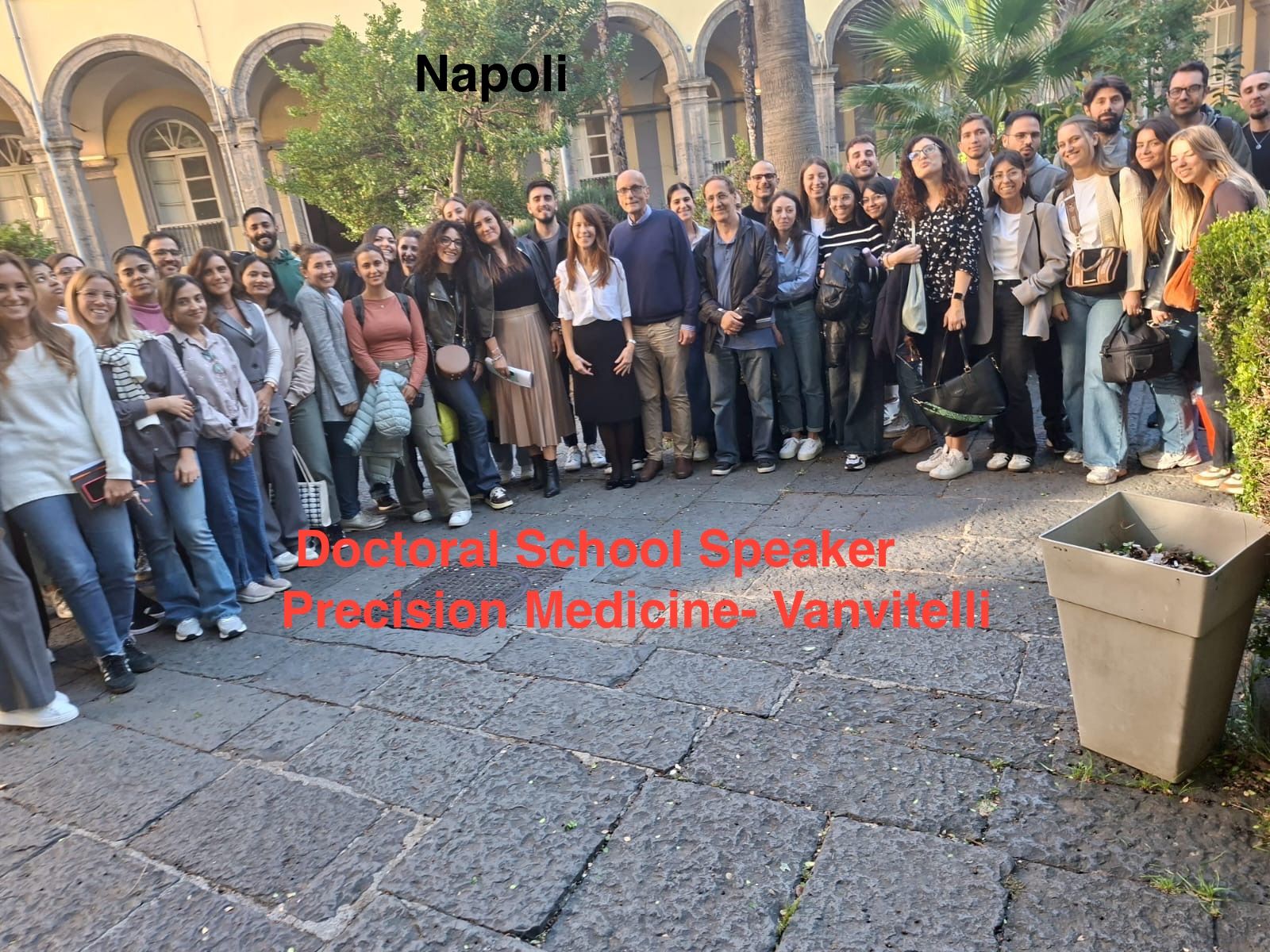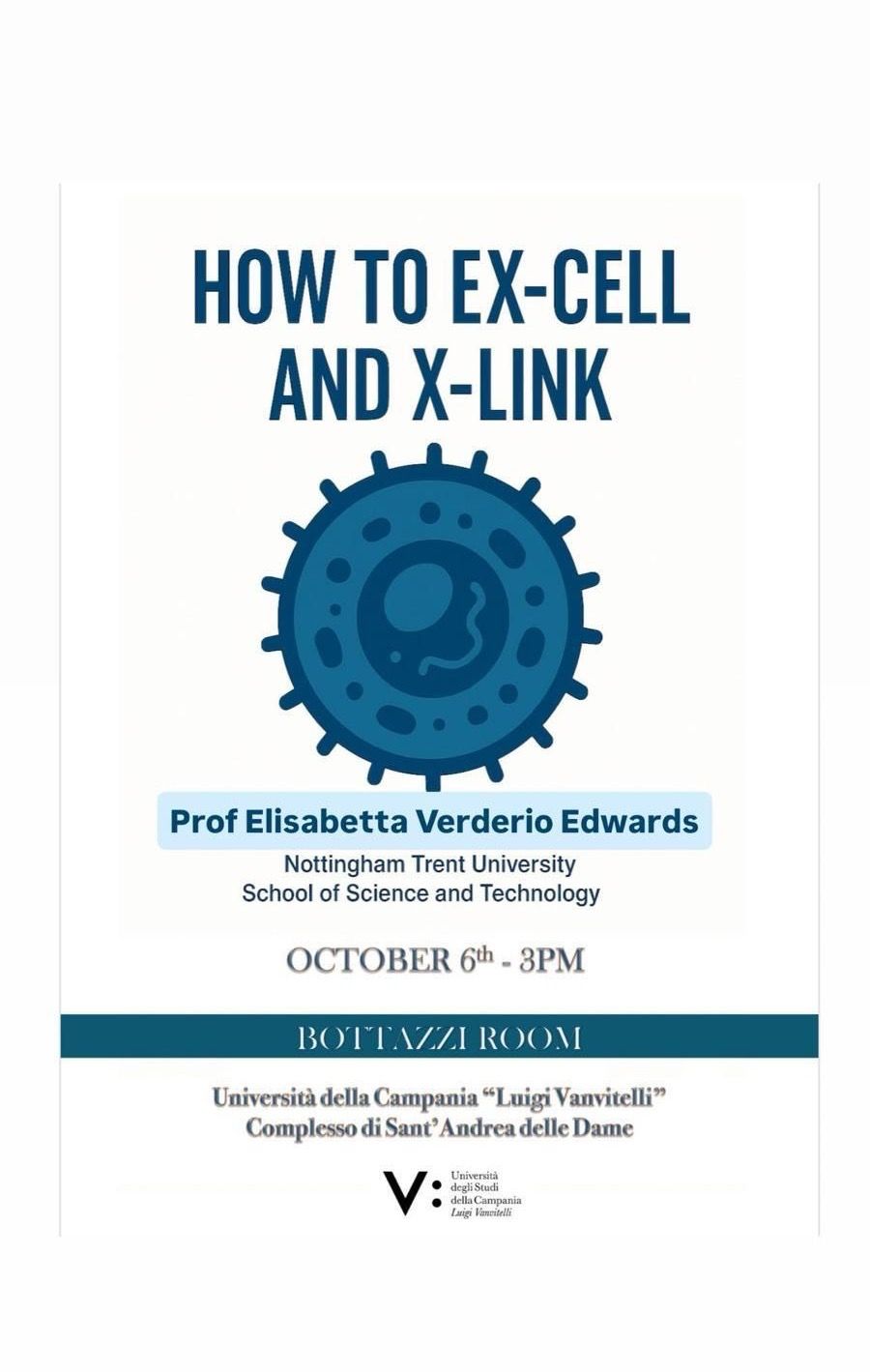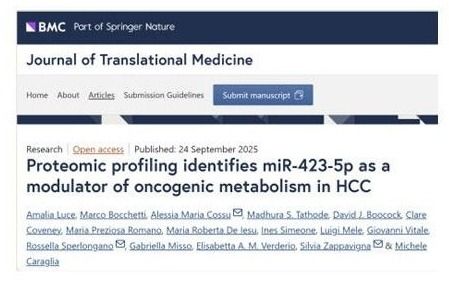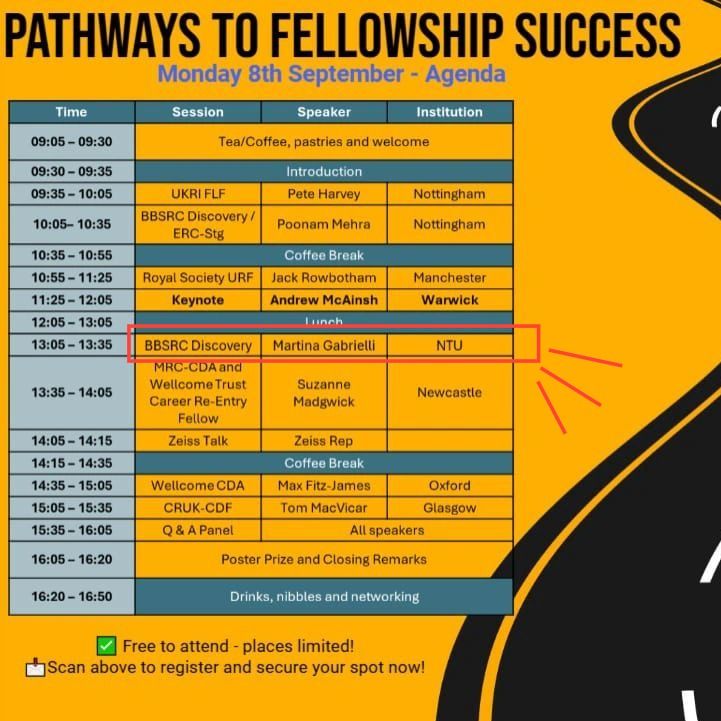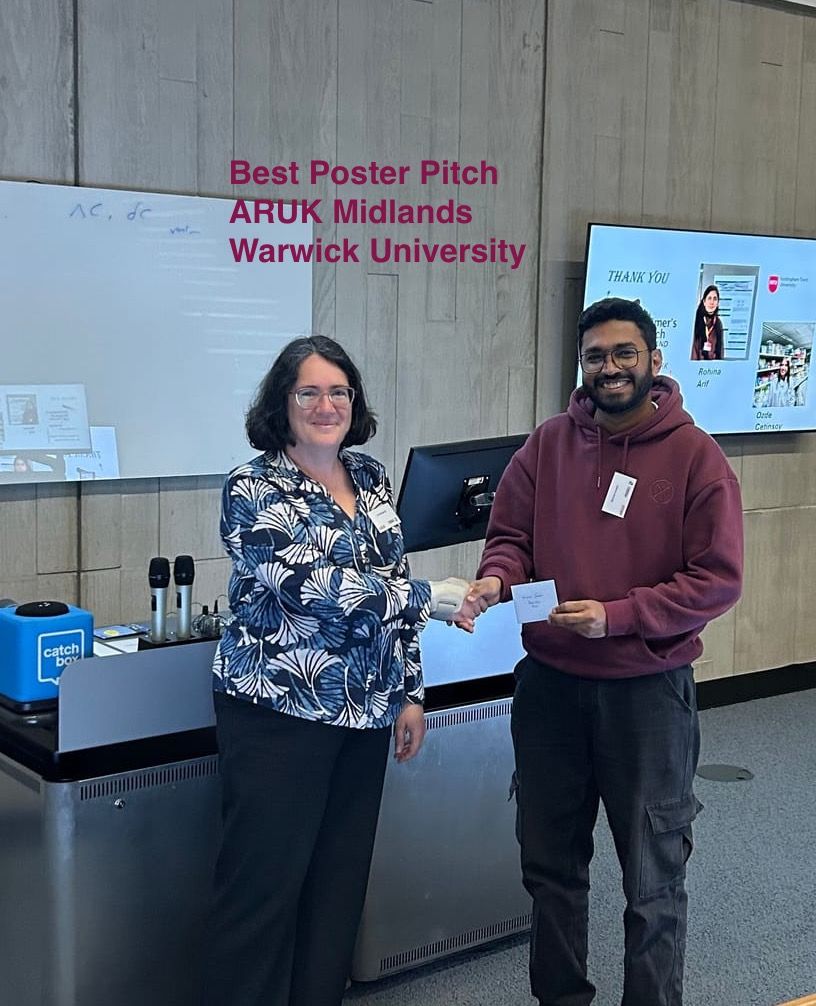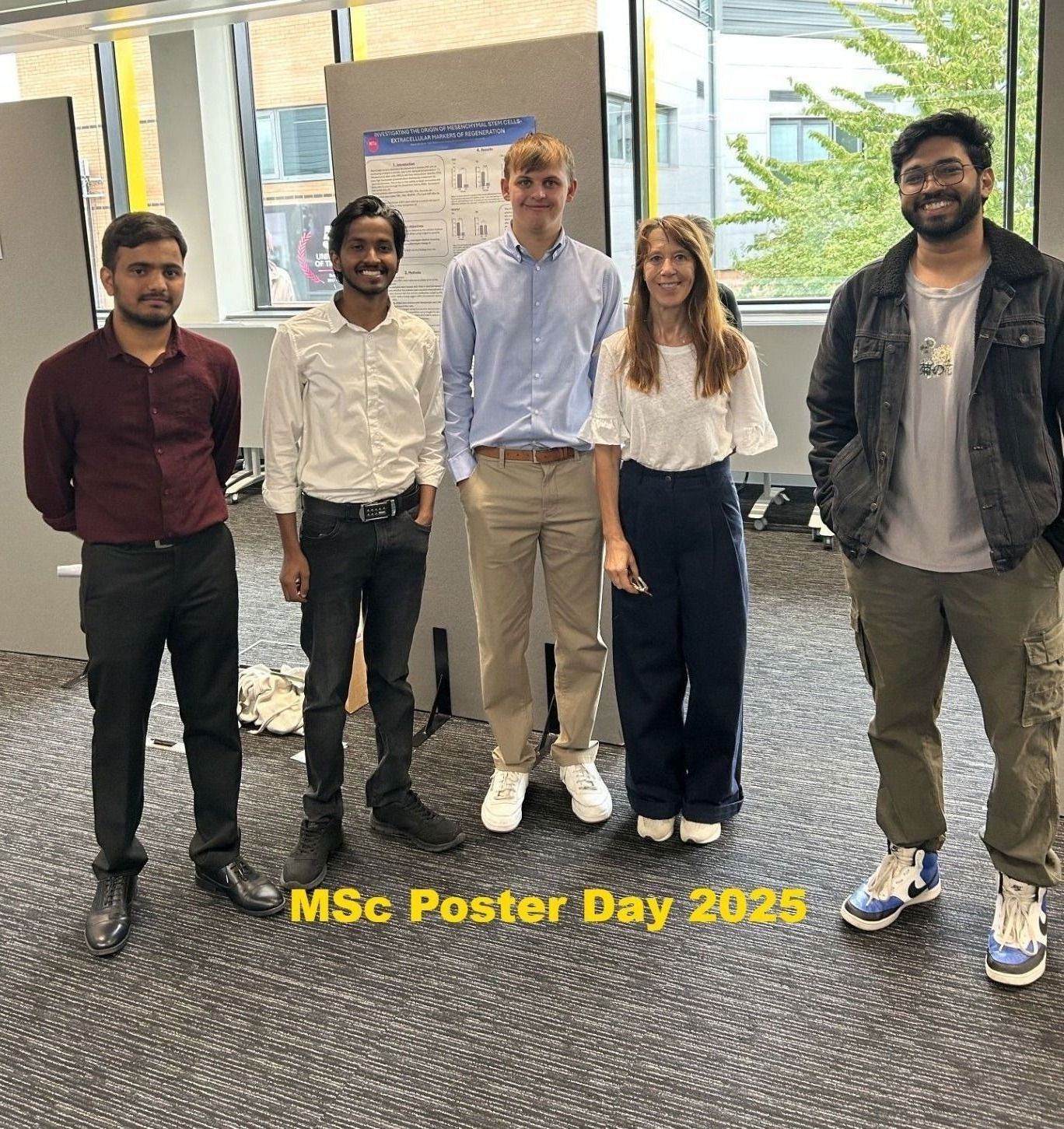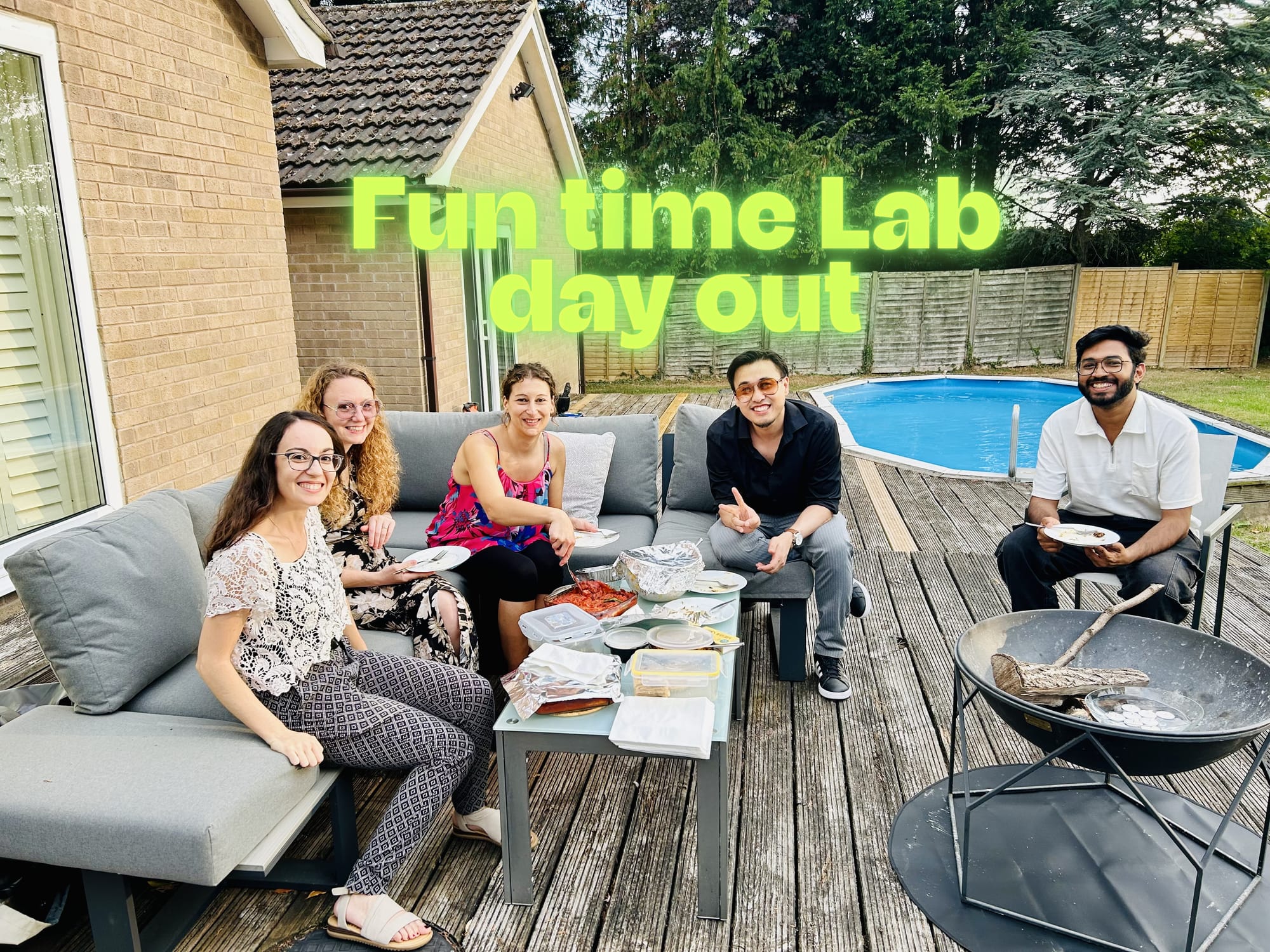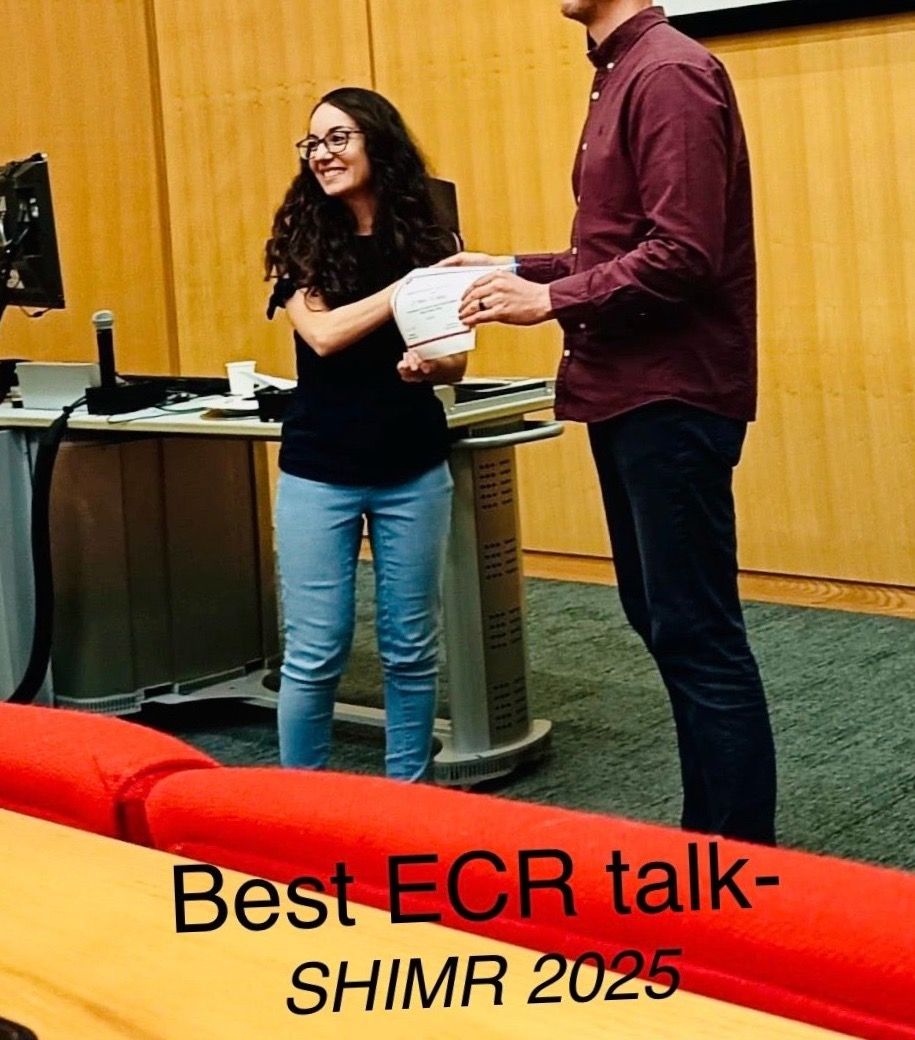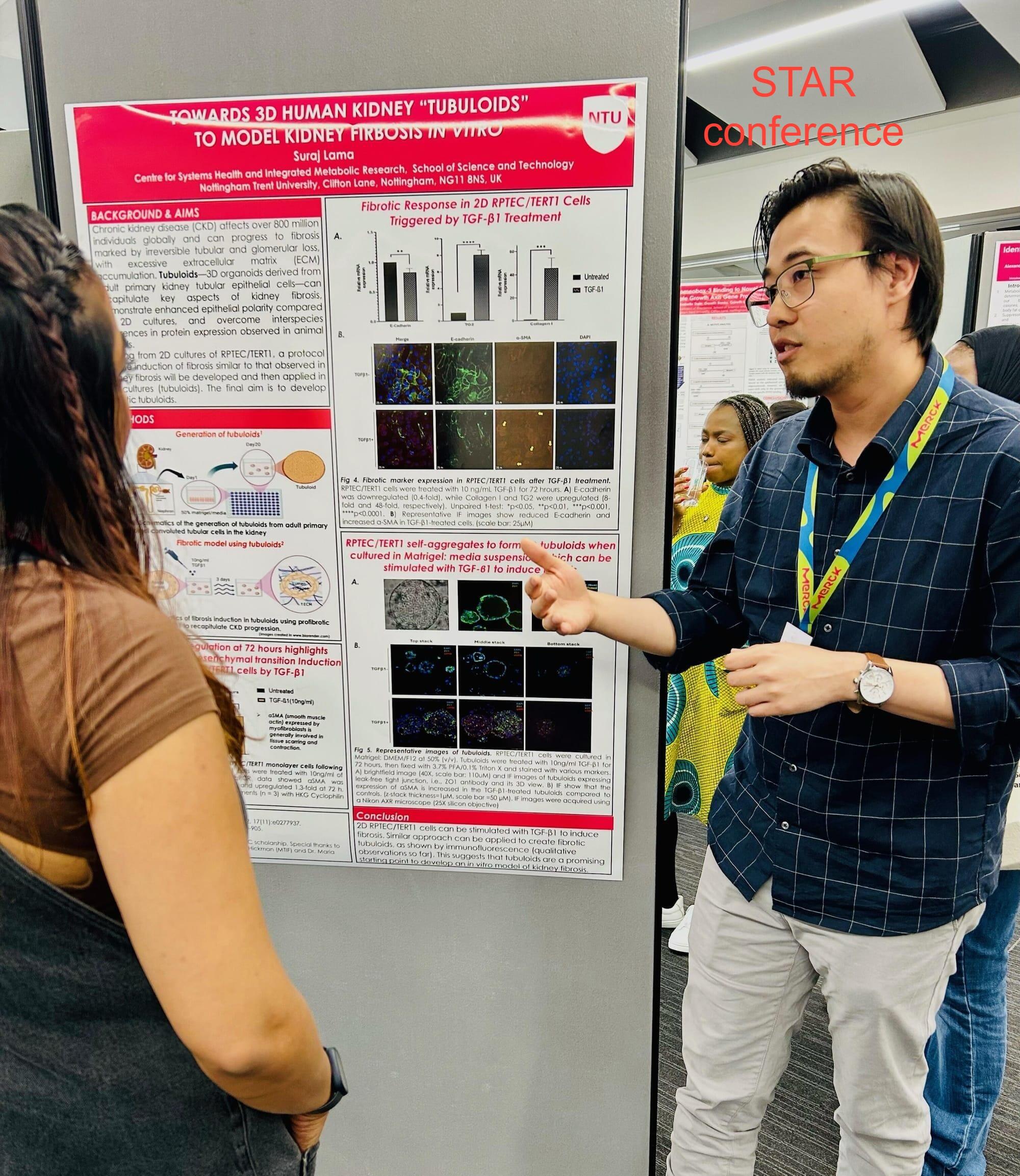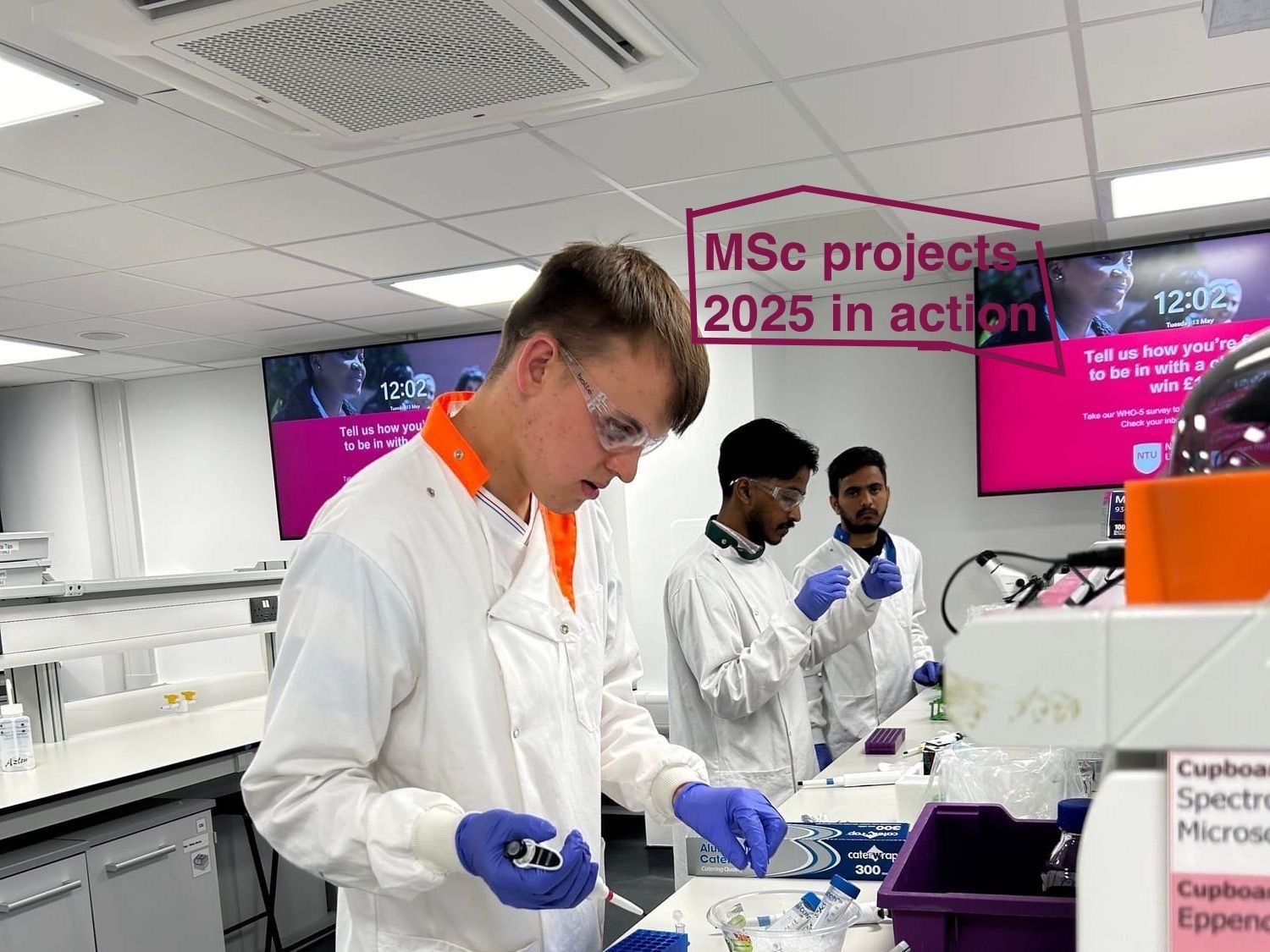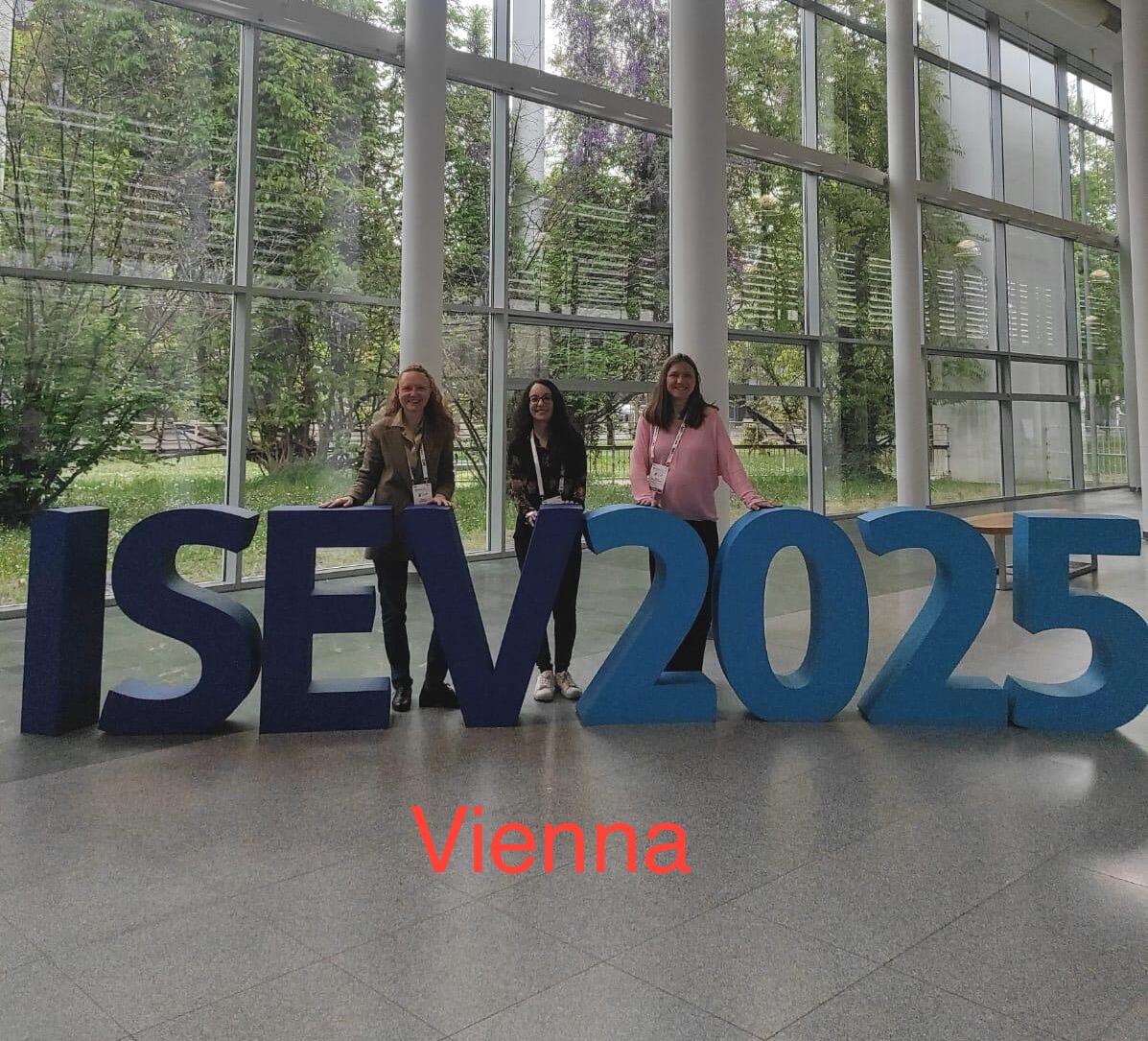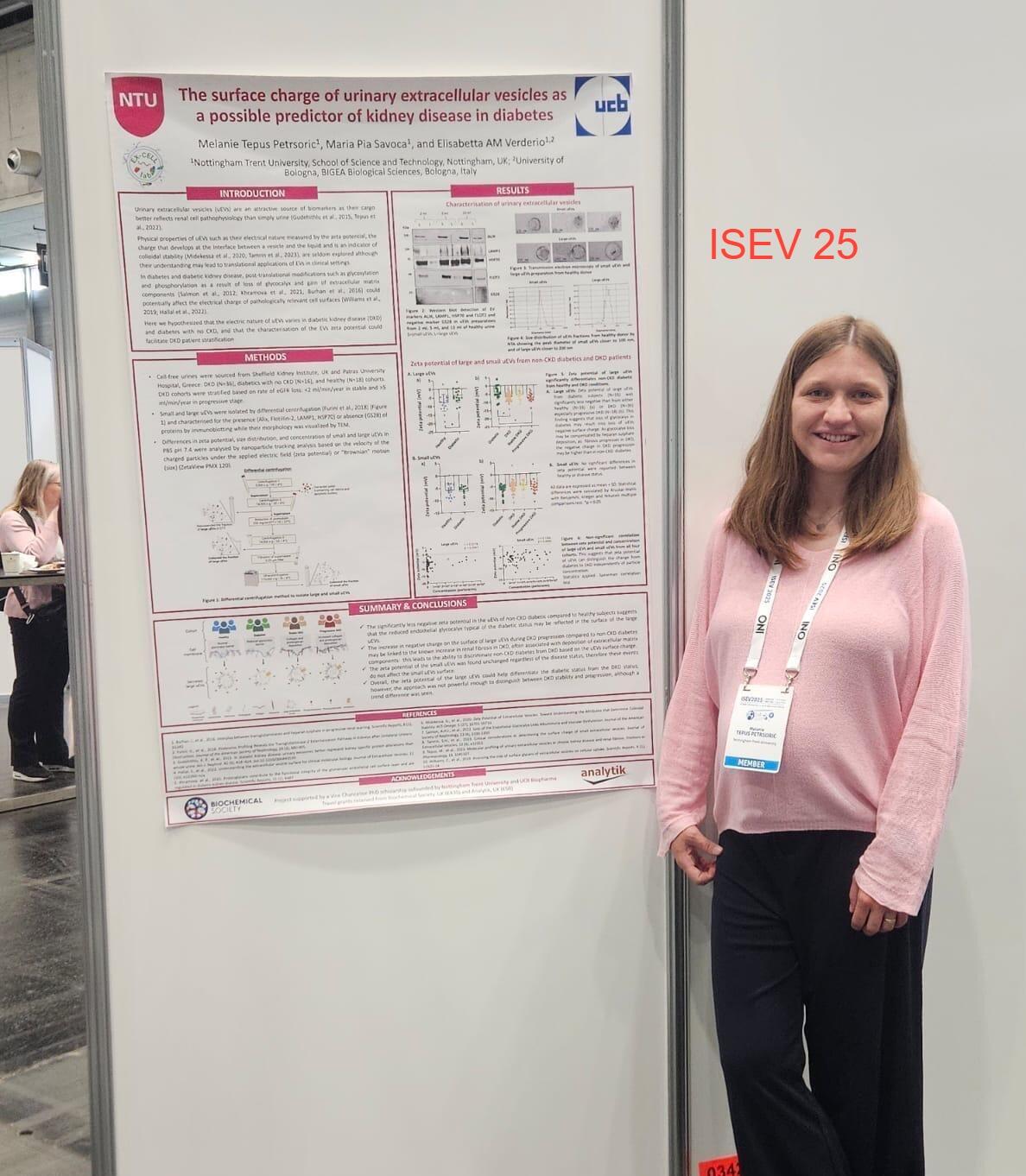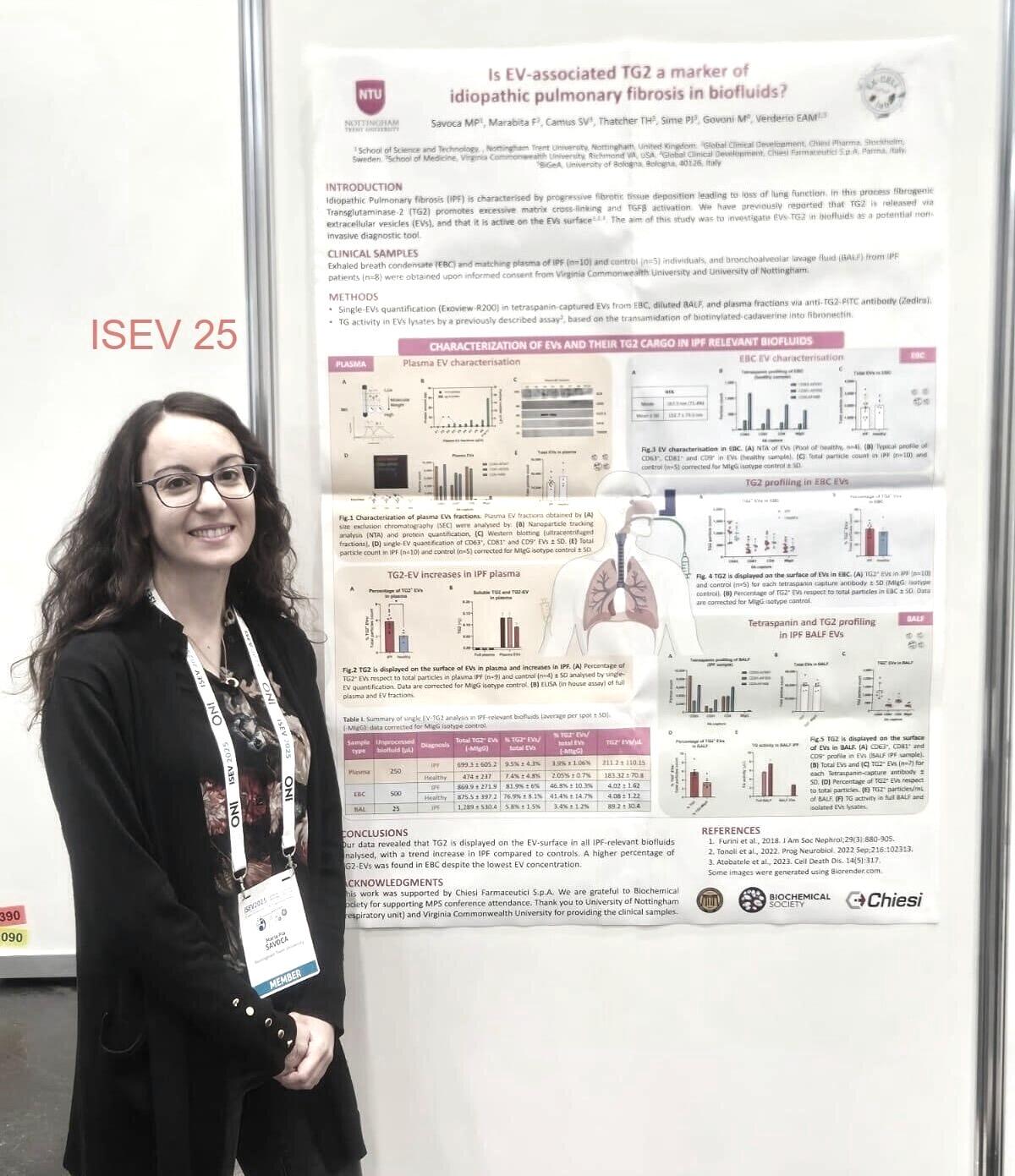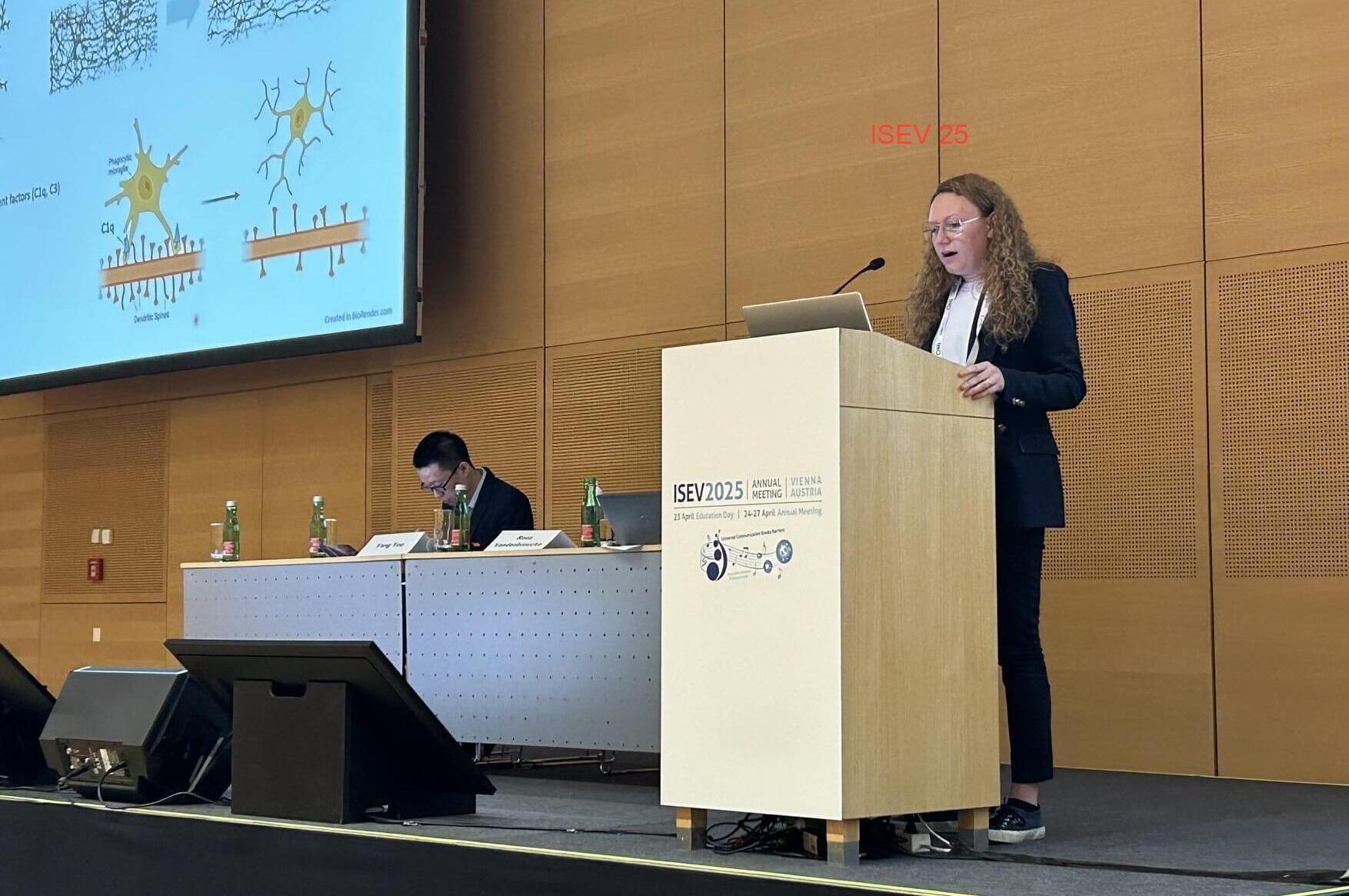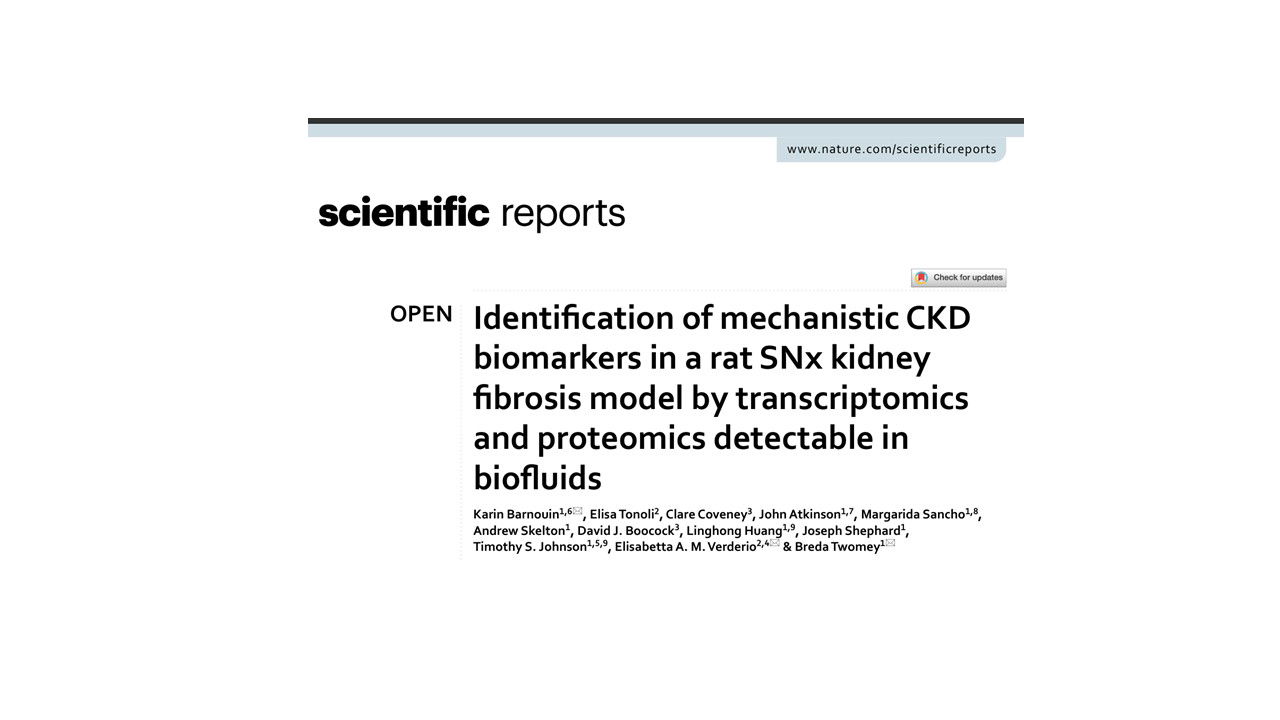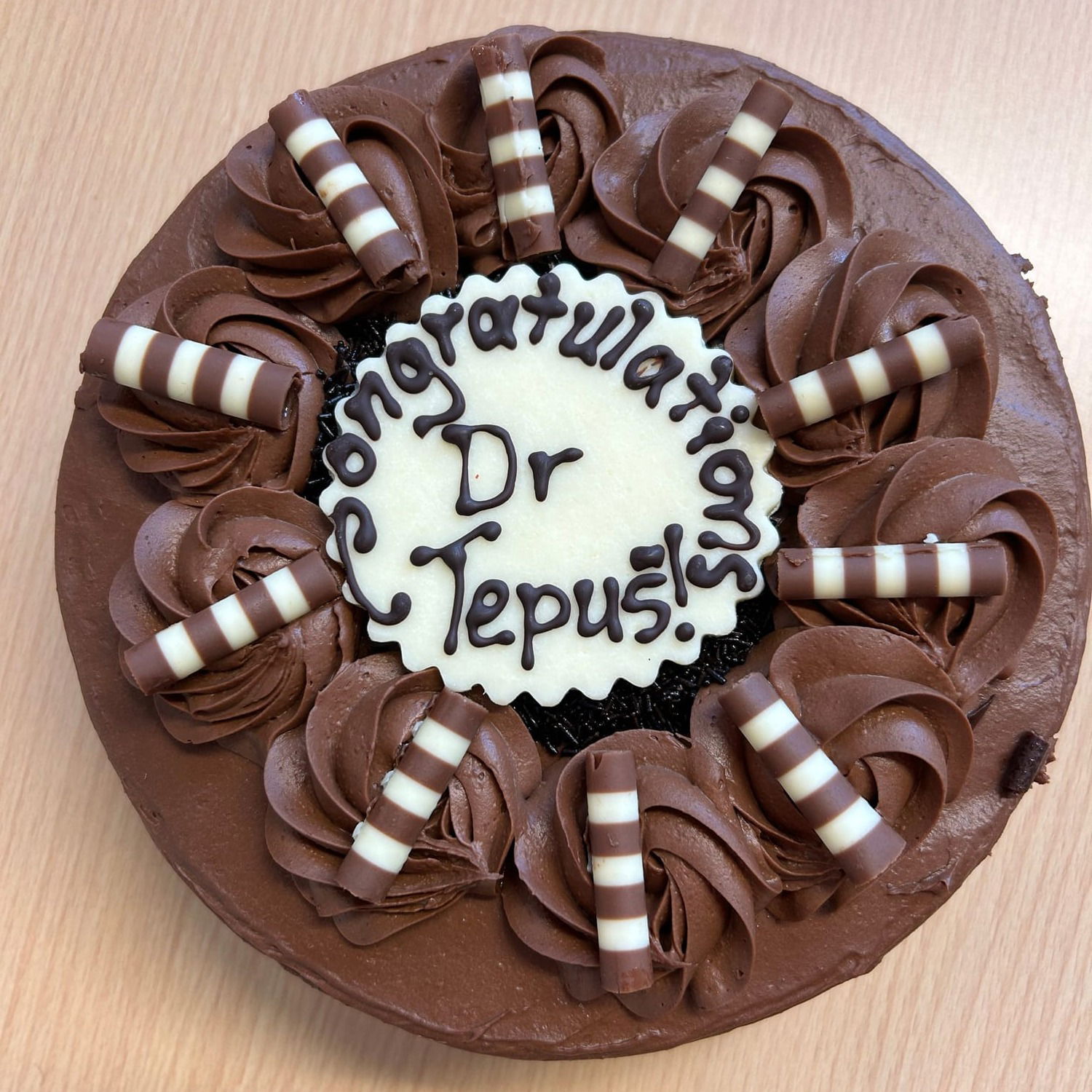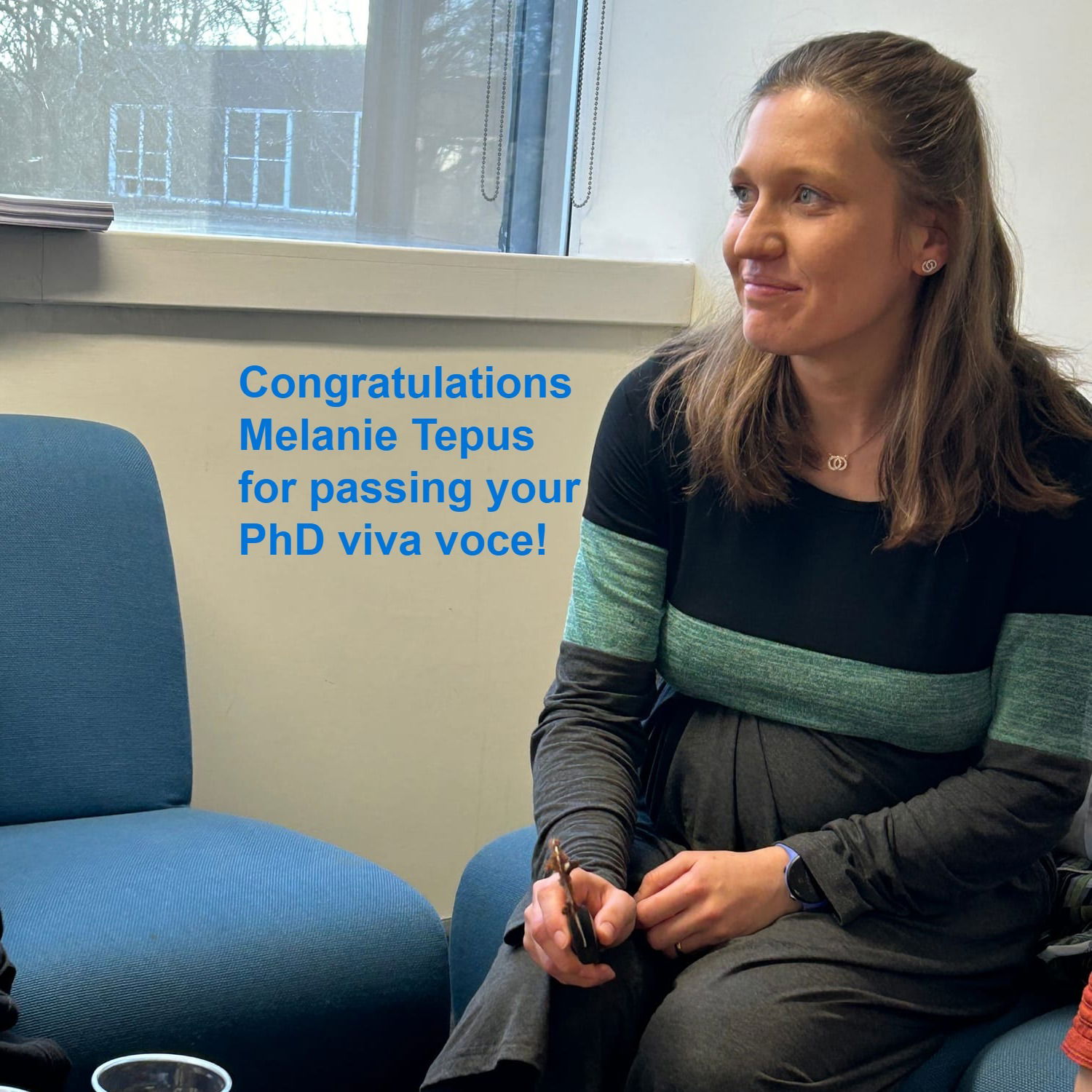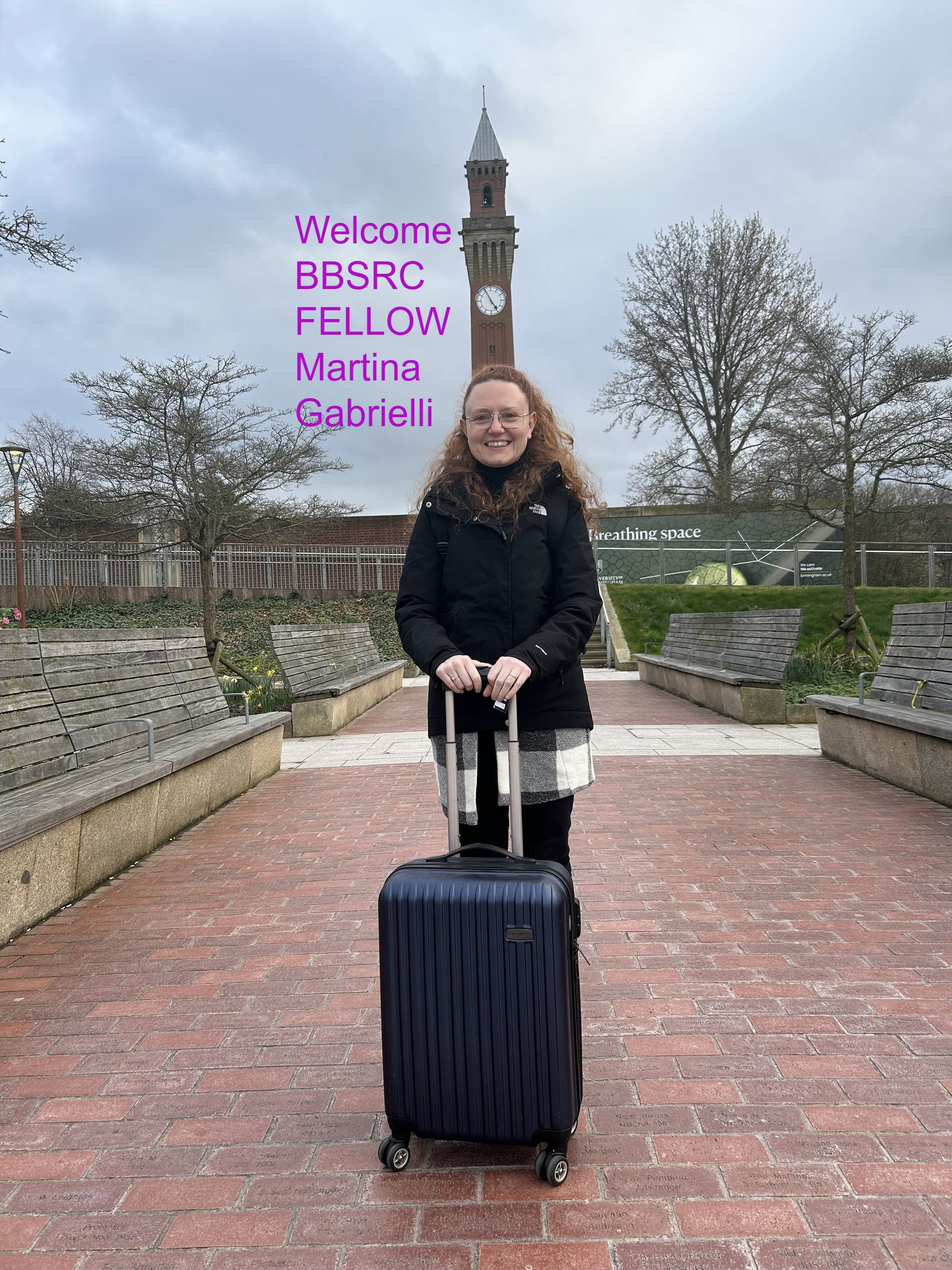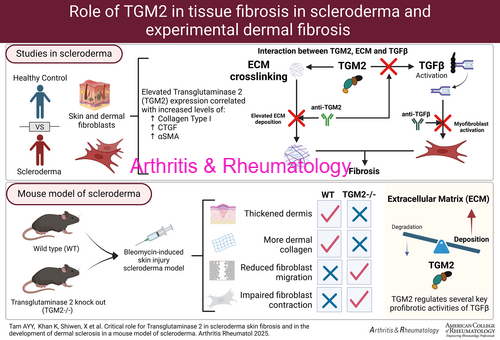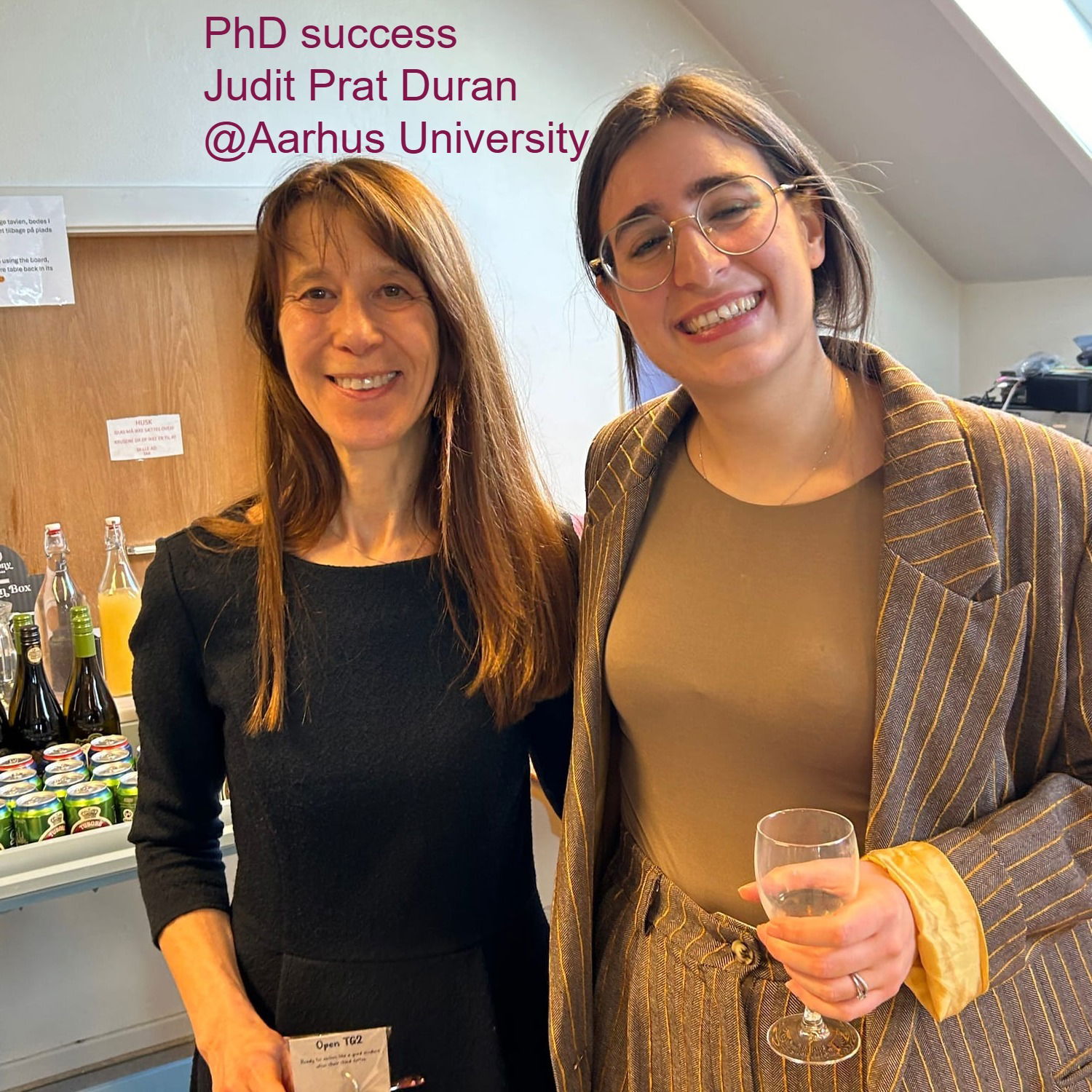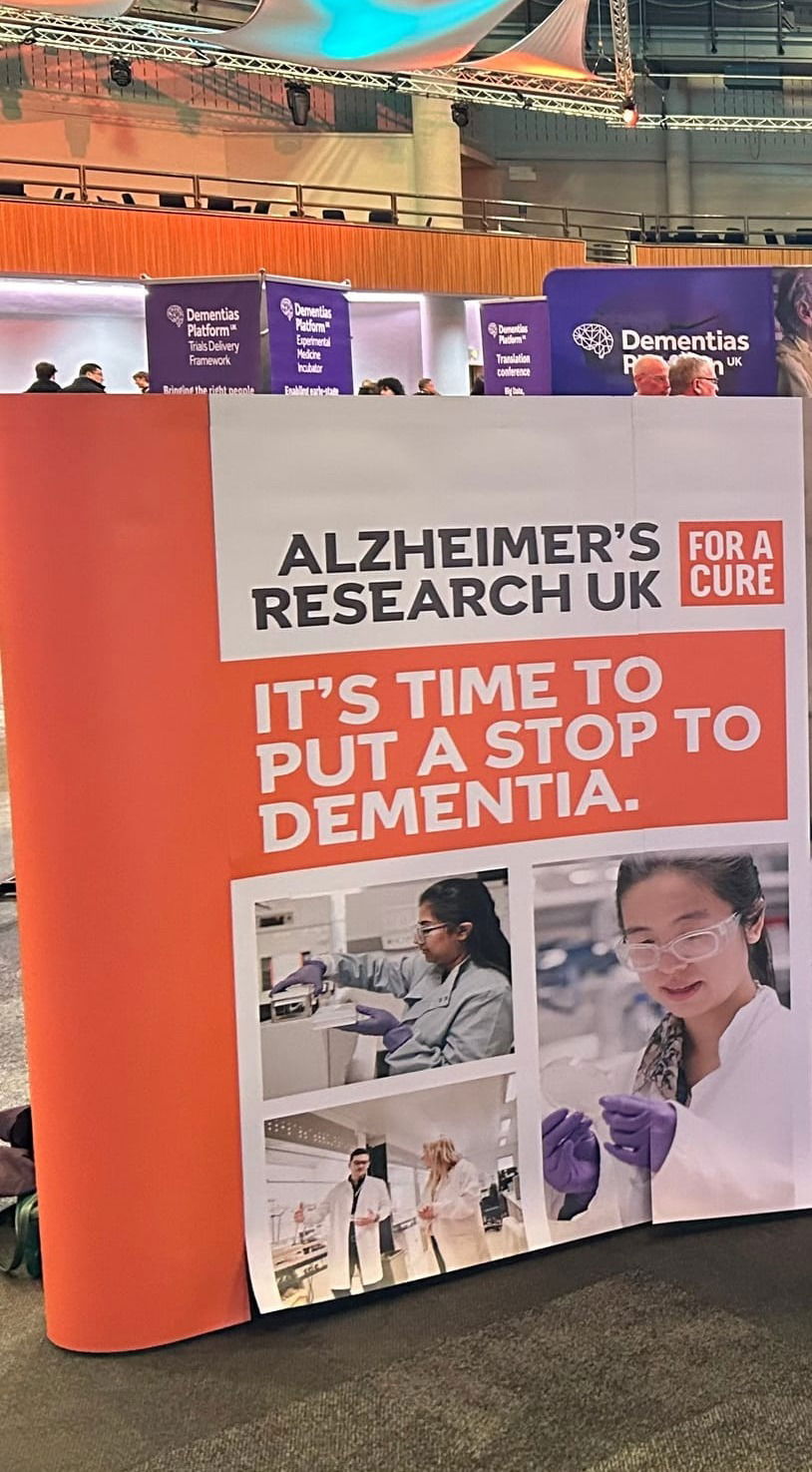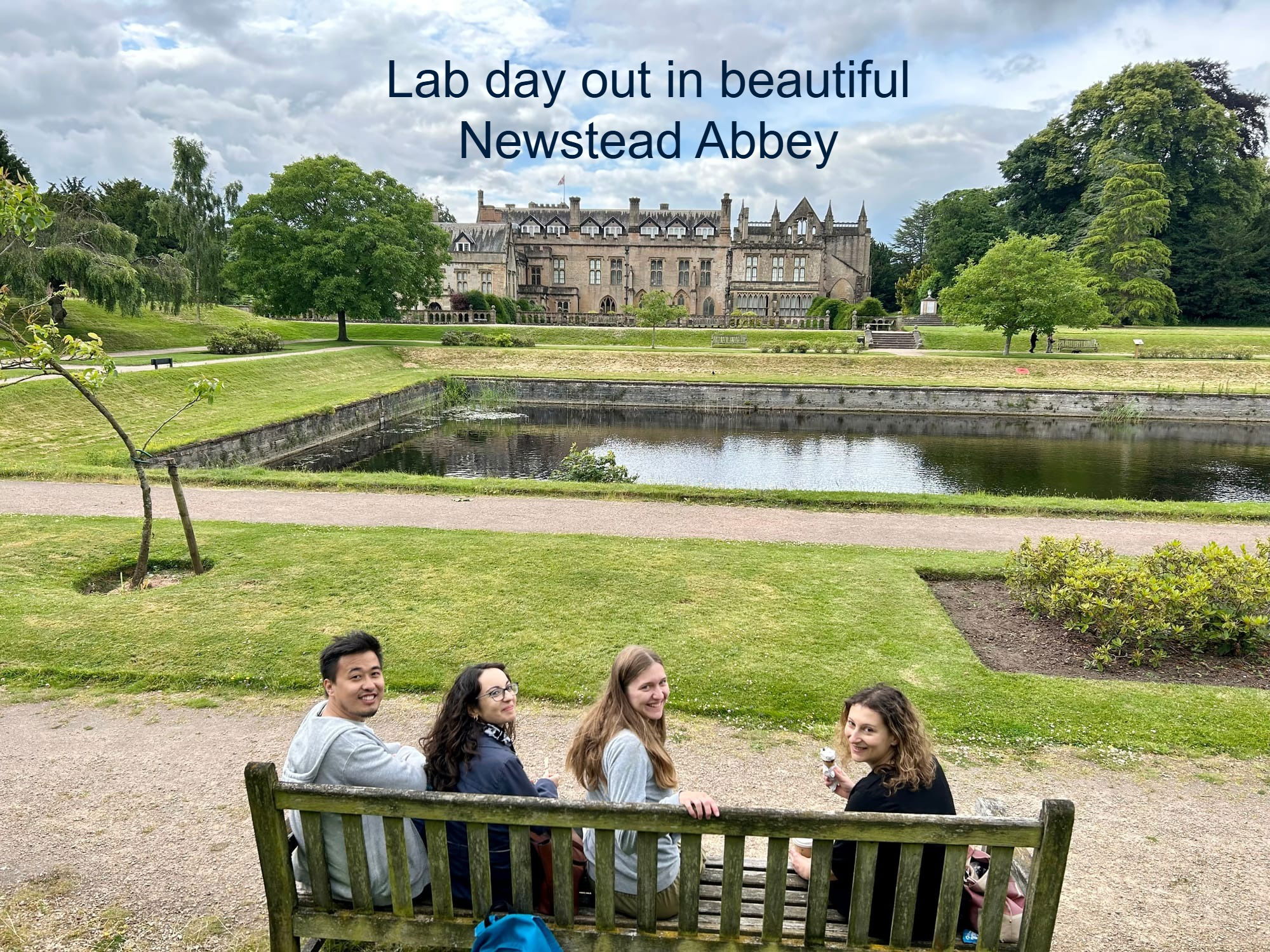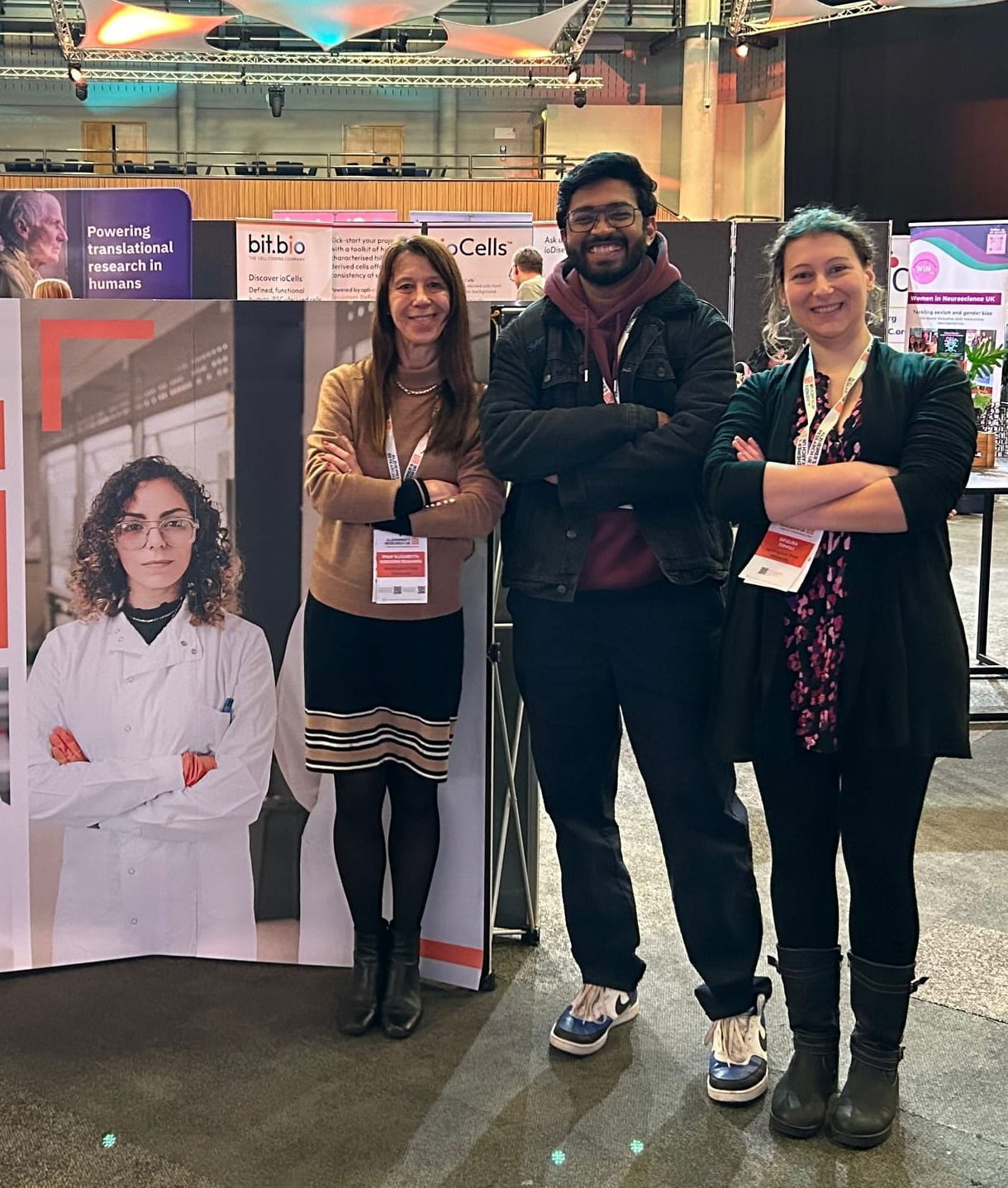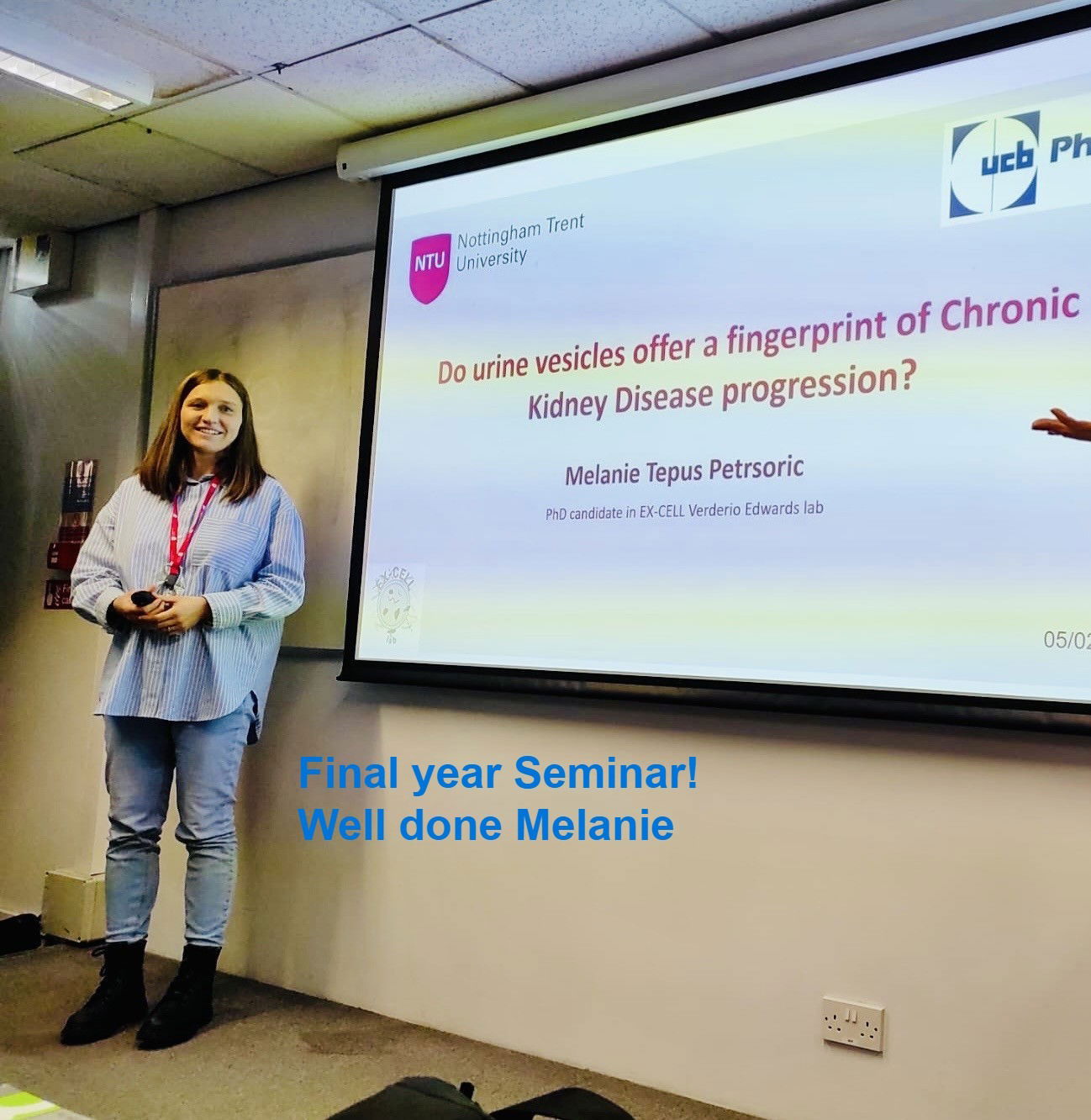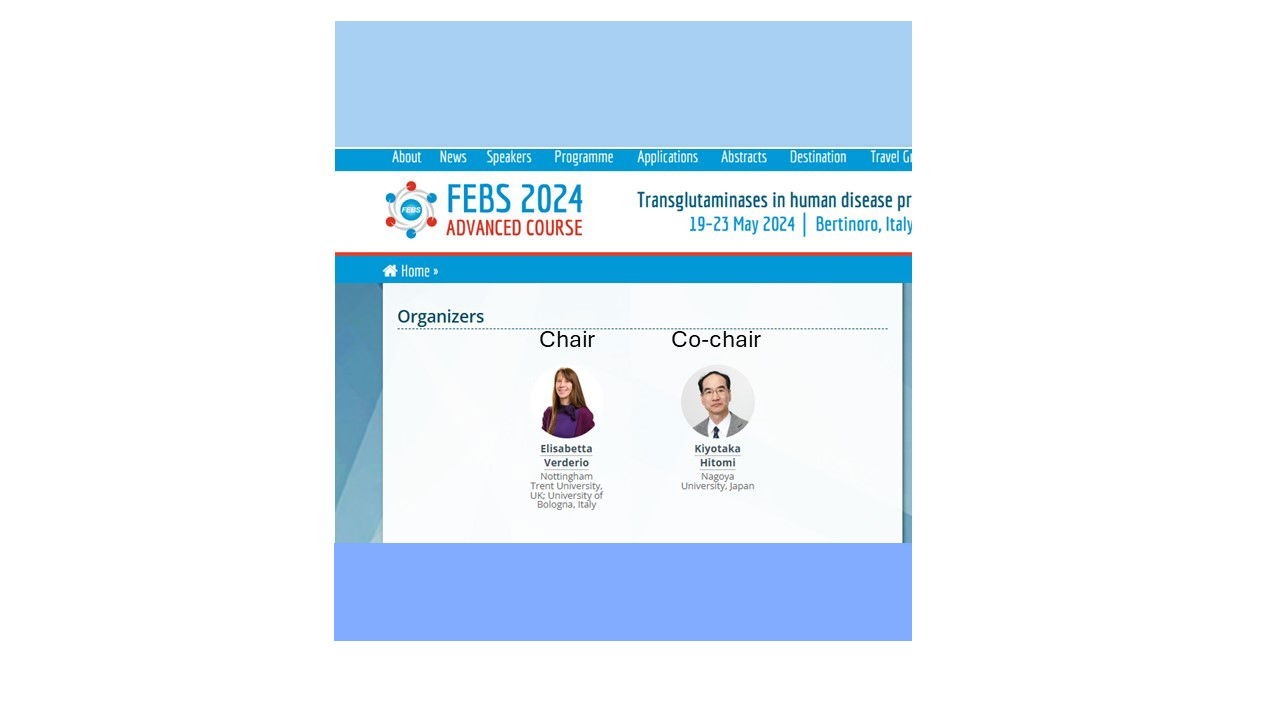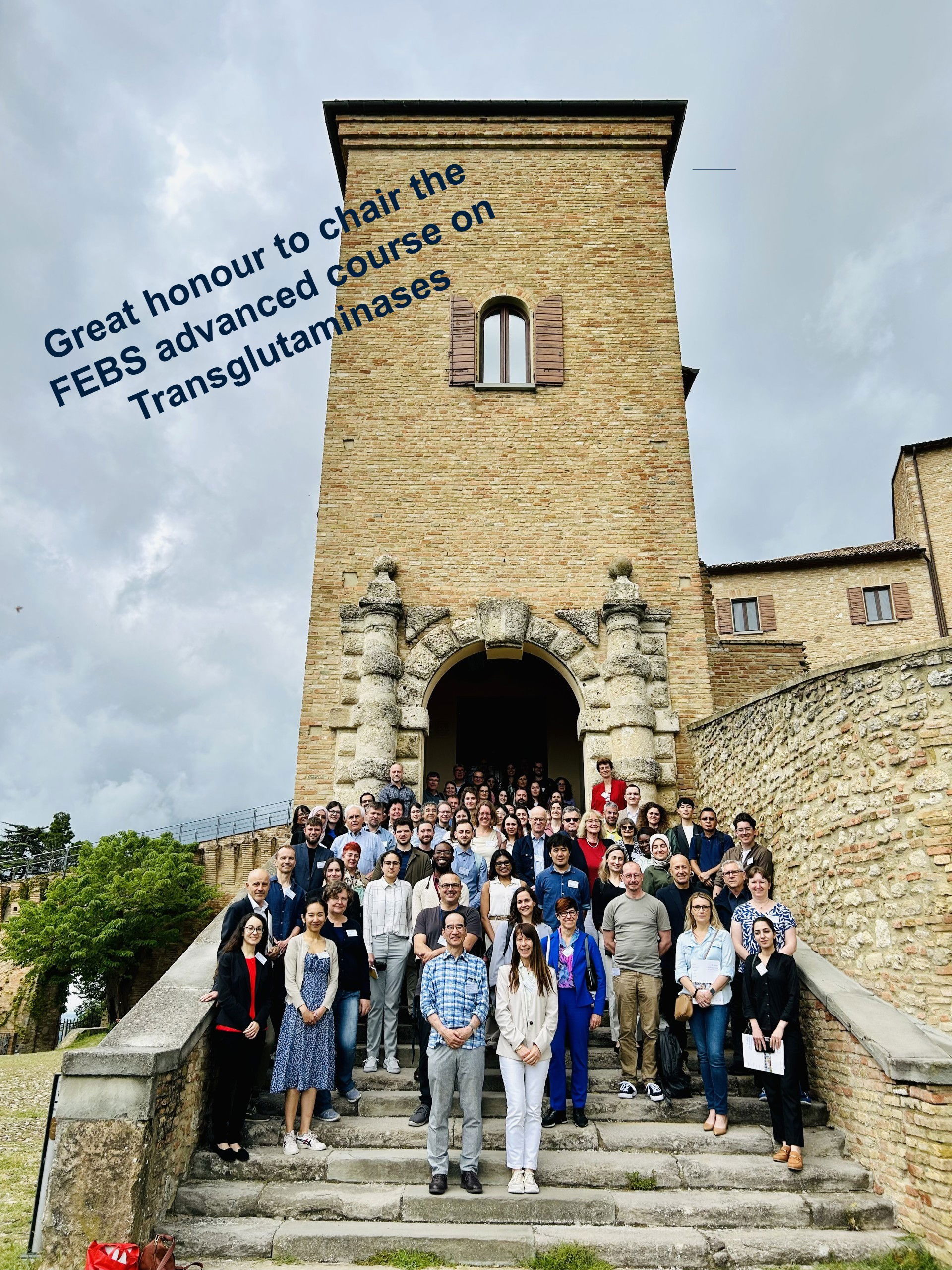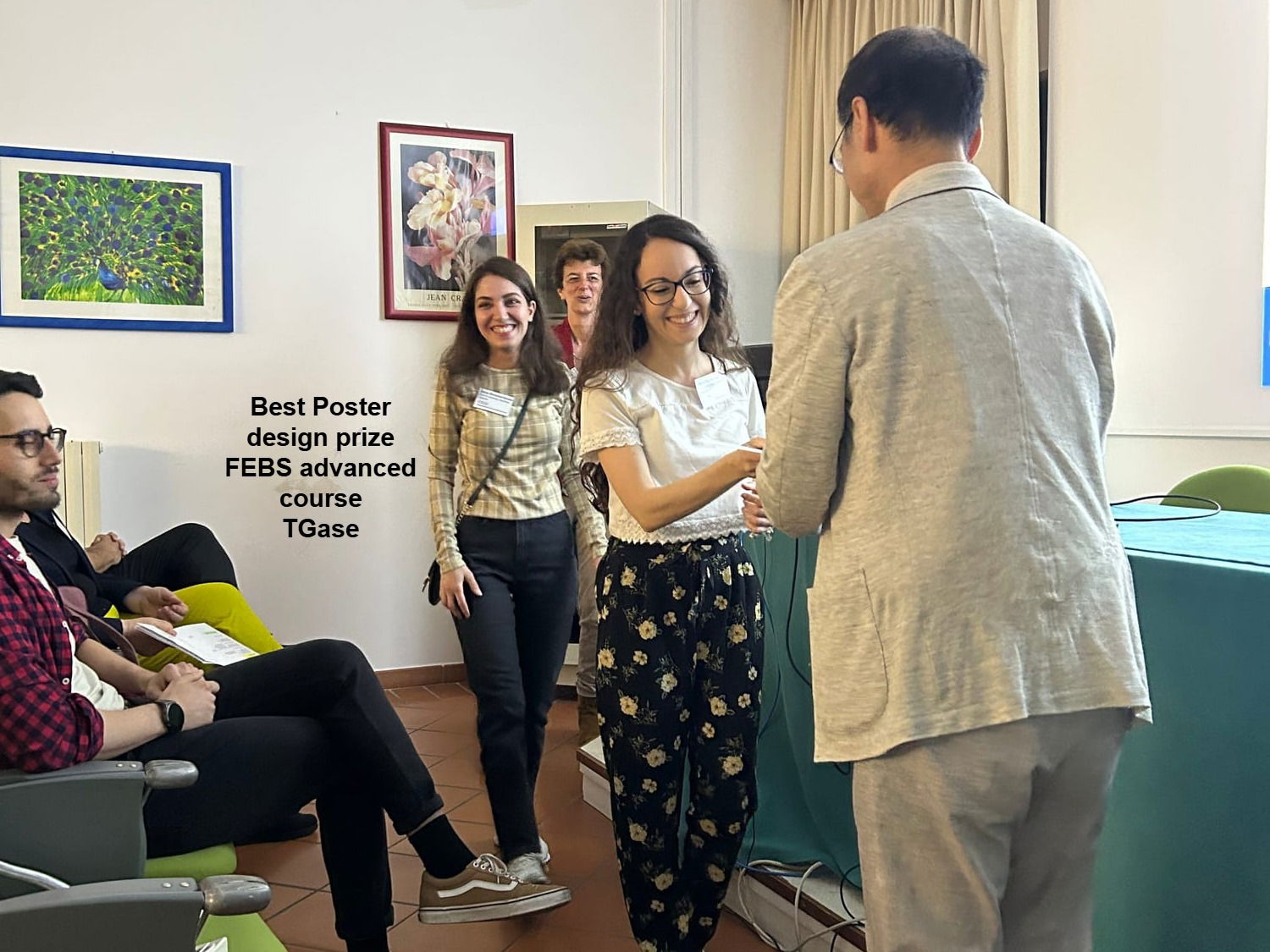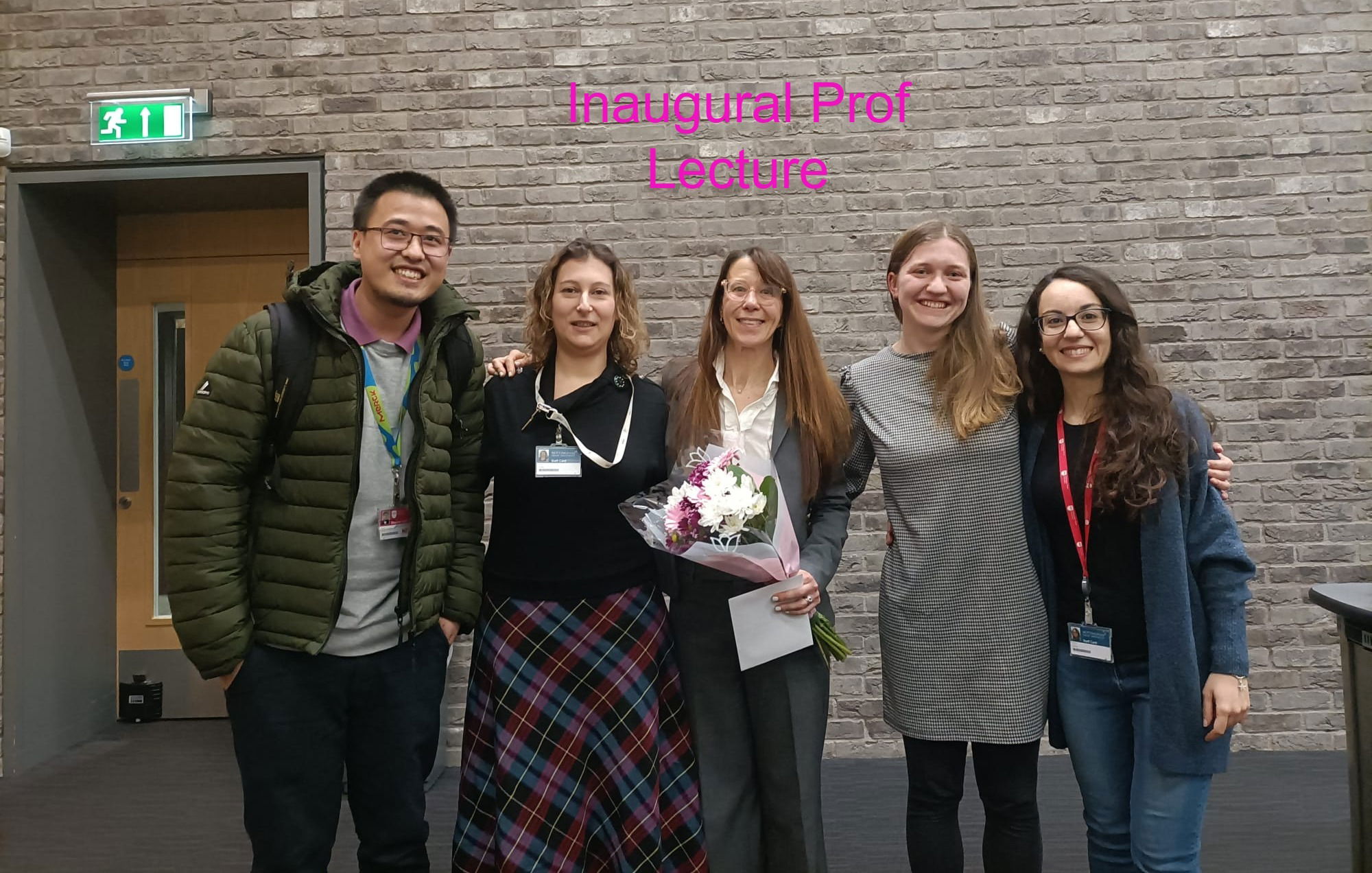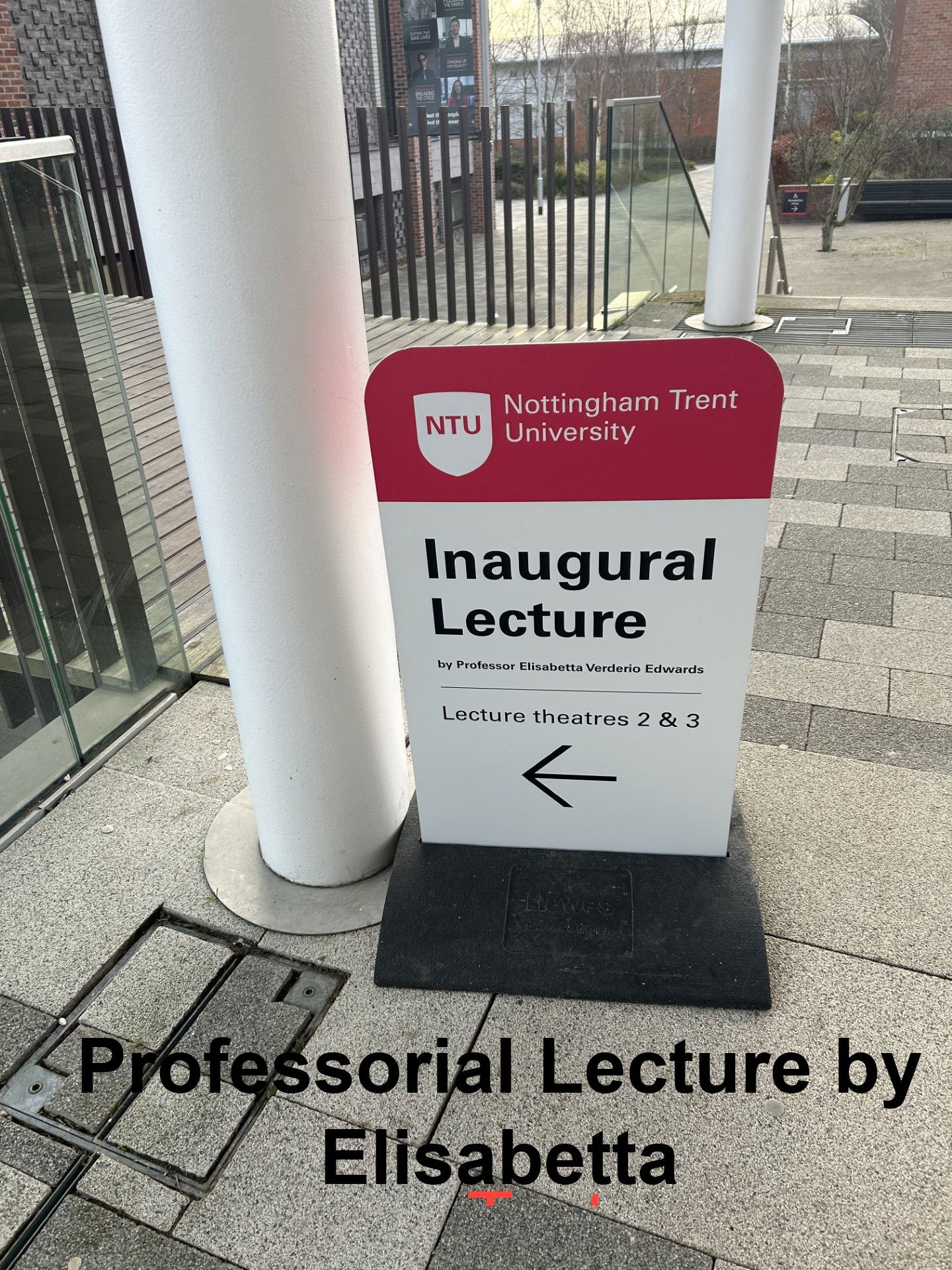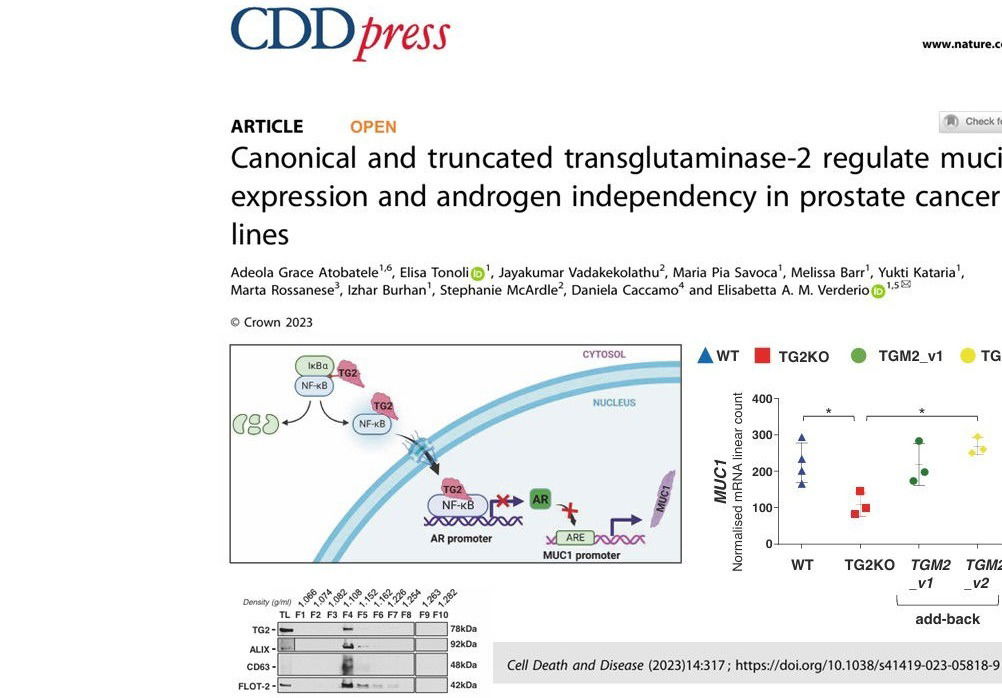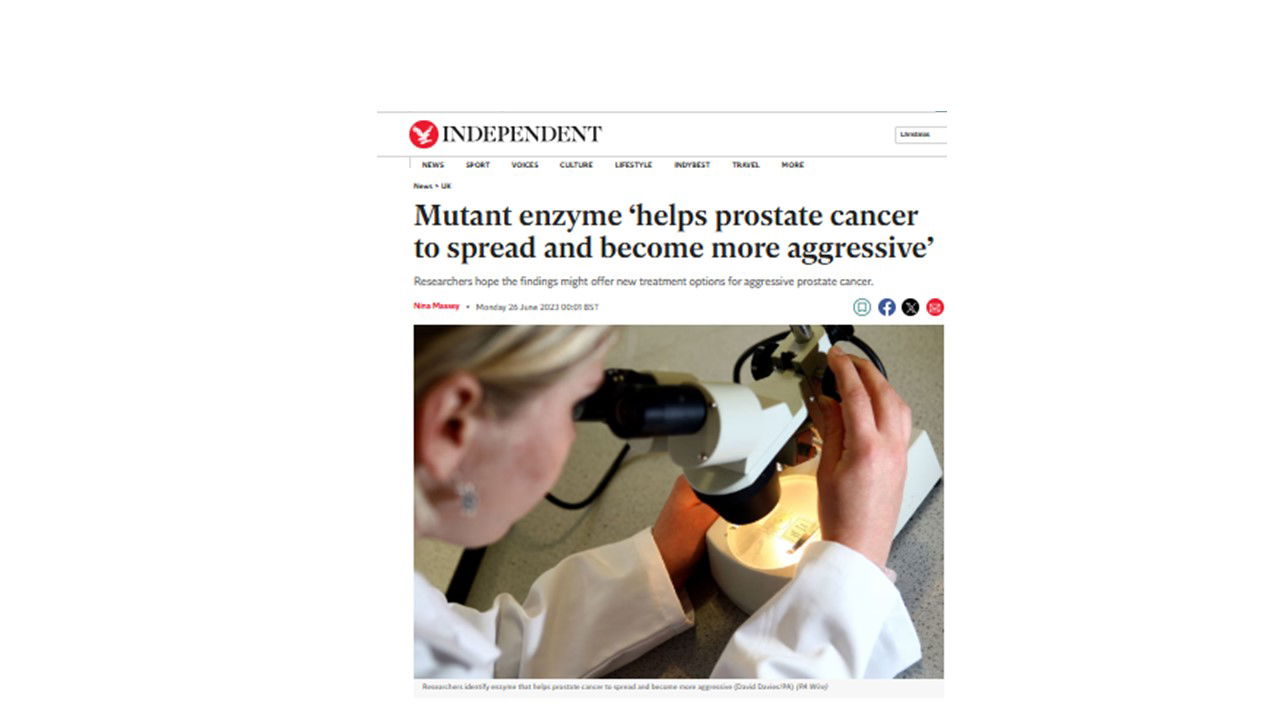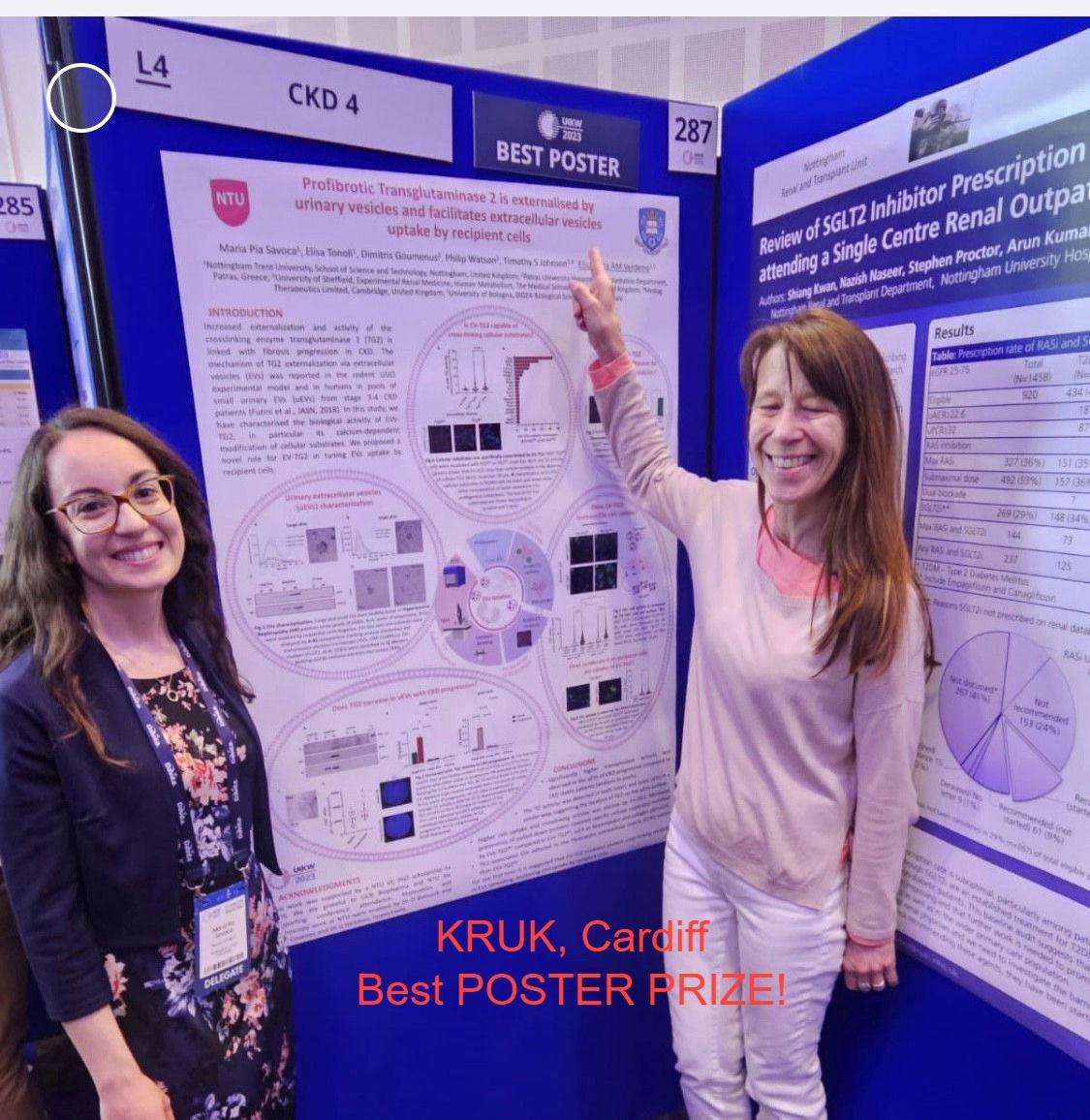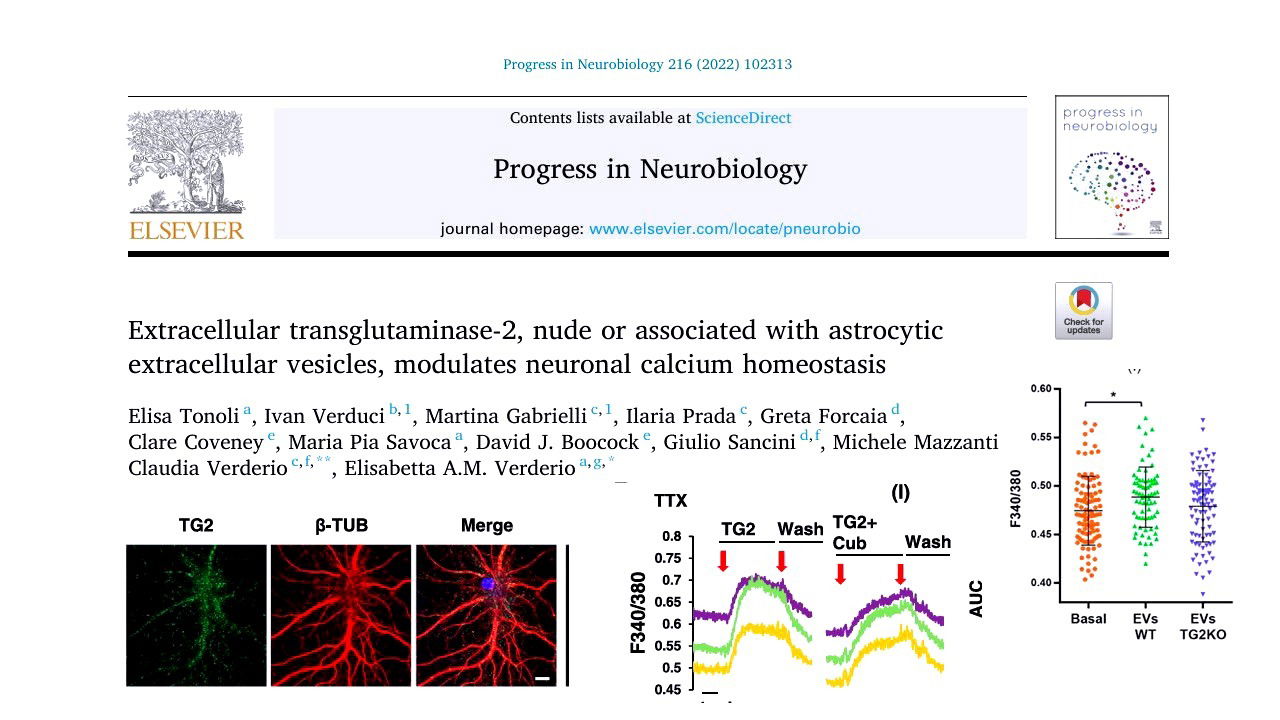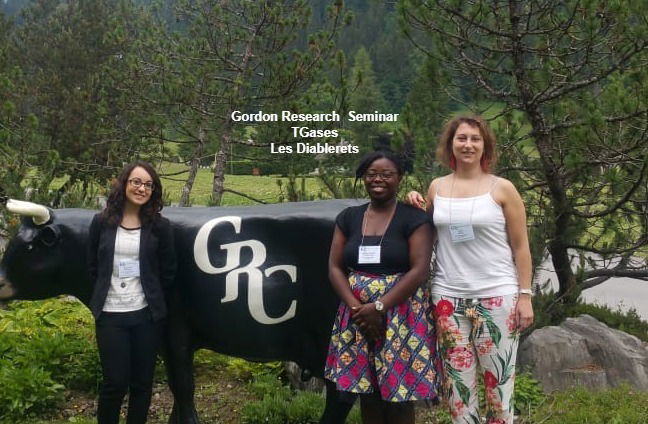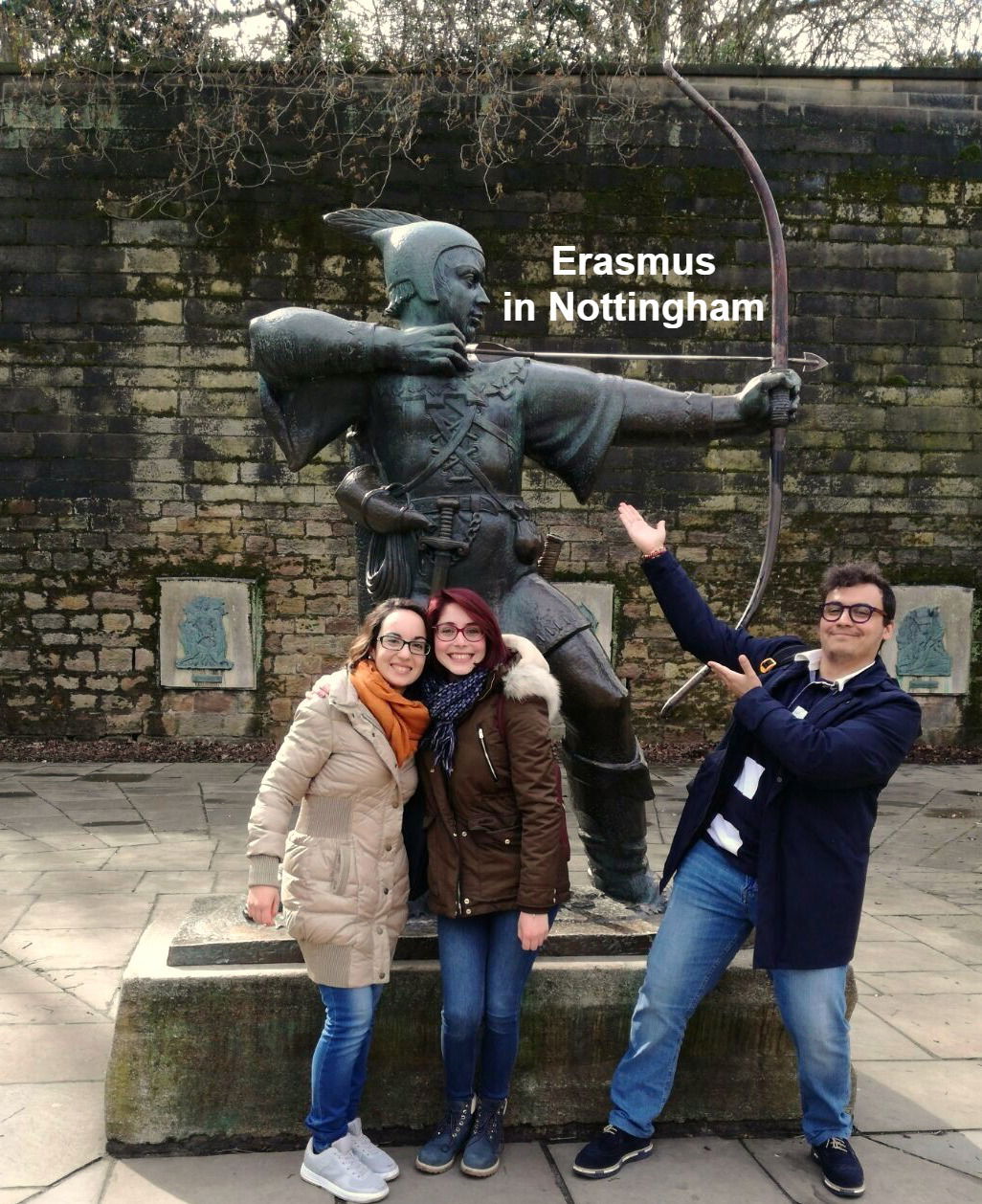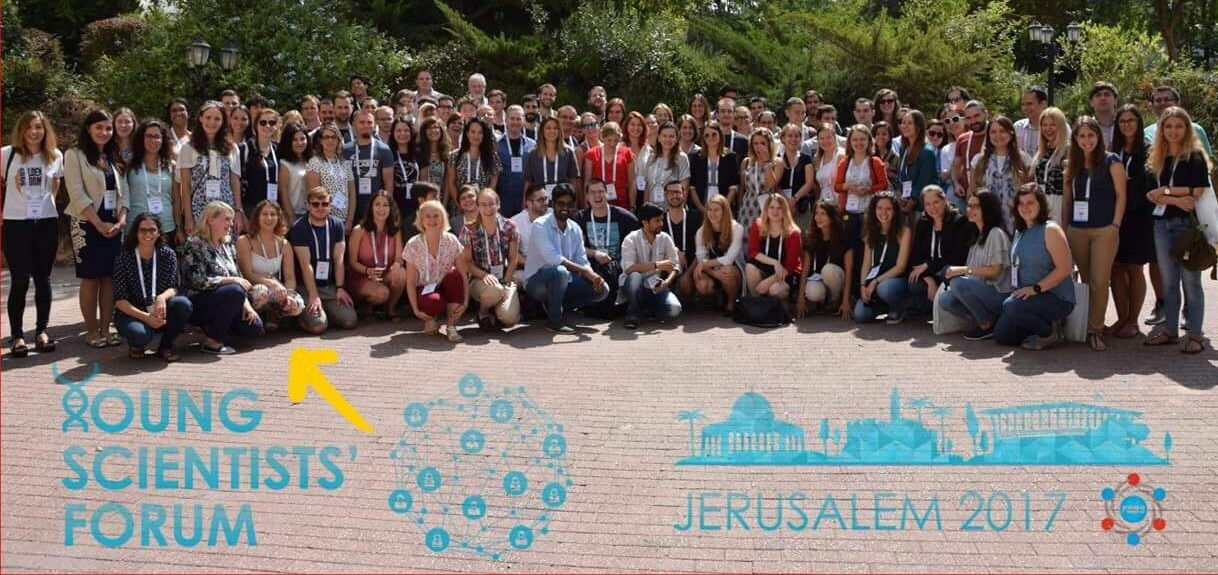Exploring the extracellular environment
Team
Maria Pia Savoca
Research Fellow (PhD)
Extracellular vesicles; Transglutaminase; Extracellular matrix; Proteomics; Microscopy; Cell culture and bioassays. BBSRC FTMA UKHAIC, SHiMR ECR Best talk '25, Biochem Soc travelship '25, UKEV travelship '24, FEBS advanced course Poster prize '24, UKKW Best poster prize '23, Gordon RS travelship '18
Melanie Tepus
PhD researcher
Extracellular vesicles; siRNA; Chronic kidney disease; Proteomics; Molecular biology; Bioinformatics. Biochem Soc travelship '25, ISEV-EV Biomarkers (Aalborg)-selected PhD student '23
Suraj Lama
PhD researcher
Chronic Kidney disease; Fibrosis models; Spatial transcriptomics, Organoids, Transglutaminase
Michael Joseph
PhD researcher
Mesenchymal Stem Cells, iPSC neurons, Extracellular vesicles, Alzheimer Disease ARUK small grant '25; Best Poster Pitch, ARUK Midlands ‘25
Elisabetta Verderio Edwards
Professor (Chair) of Biochemistry
LAB LEAD
Martina Gabrielli
BBSRC independent Research Fellow
Research Fellow in Neuroscience ISEV '25 Neuro Chair
Our values
INCLUSIVITY
Research is inclusive and consists of positive and negative results
COLLEGIALITY
A constructive environment with transparent communication, cooperation and sharing of success and challenges
ACCOUNTABILITY
Responsibility of the research is for everyone from early career to professors
AUTHENTICITY
Our minds creativity and originality is protected from artificial thinking
COMMUNICATION
Research must be shared and communicated as wide as possible, from scientific writing to story-telling
EQUALITY
Discrimination is not accepted
Projects
Extracellular vesicles -cell and -ECM dynamics: mechanisms in health and disease
Mesenchymal Stem Cells -extracellular vesicles in neuronal cell survival
The focus of this project is on tracking neuroprotection of mesenchymal stem cell-derived extracellular vesicles (MSC-EVs) and their cargo. Through a multi-omics approach, we have identified MSC-EV-specific cargo (proteins, cytokines and miRNA) that are enriched in MSC-EVs and could potentially be used as neuroprotective agents against neurological conditions such as Alzheimer's disease.
Learn MoreInduced pluripotent stem cell models of human brain
Extracellular transglutaminase-2 in tissue fibrosis: a new therapeutic avenue
What is Transglutaminase-2? Transglutaminase type 2 (TG2) (EC 2.3.2.13), which belongs to an emergent class of proteins with distinct molecular activities, functions both inside and outside the cell and transits the plasma membrane by unconventional secretion.
Learn More3D transcriptomics to understand fibrosis progression
Urinary extracellular vesicles proteomics/transcriptomics and markers of CKD progression
Lab Methods
Transglutaminase research
Transgutaminase-2-mediated protein cross-linking involves an isopeptide bond formation between two cellular substrates: a gamma carboxamide group of a peptide-bound Gln residue and the epsilon-amino group of a peptide-bound Lys residue or a primary amino group of a polyamine. Protein deamidation of Gln residues by TG2 contributes to the development of disorders caused by gluten sensitivity. The expression and activation of TG2 is believed to occur as a response to tissue "injury" and the enzyme is tightly controlled by the redox state affecting the Cys active site. TG2 is ubiquitous and externalised via extracellular vesicles in many cell types. Our laboratory has a long history of specialistic research on this enzyme family: many of the methods now commercially available were developed at NTU. We are leaders in the field.
3D cultures
From conventional cell monolayers, our research is moving towards three-dimensional cell models, organoids and organoids on chips, which re-create a physiological mocroenvironment including tissue-specific endothelial cells. Organ-Chips combine cell culture with microfluidics and are provided to us by Emulate in collaboration with Dr Hatziapostolou (NTU).
Induced pluripotent stem cells (iPSCs)
Human iPSCs (induced pluripotent stem cells) are cells obtained from human adult cells (for example, skin cells) after a process called "reprogramming" that brings them back to an embryonal state. From this state, they can be turned, or "differentiated", into any cell you want. We can use this methodology to generate brain cells, such as neurons and astrocytes, starting from the skin cells of people living with dementia or other diseases, obtaining highly translatable results in the study of human physiology and pathology.
Extracellular matrix and extracellular vesicles
We do study the extracellular environment, the extracellular matrix (ECM), biofluids, extracellular vesicles (EV) and outside-in biosignalling. We perform isolation of EVs from a wide range of biofluids (urine, plasma, serum, exhaled breath condensate), cell conditioned medium and even milk. We characterise EVs according to MISEV and rely on Nanoparticle tracking analysis, single EV quantification of cargo molecules, EVs QPCR, proteomics, transcriptomics, EV enzymatic activities, and microscopy (TEM, AFM, Nanolive).
AWARDS and CONFERENCES
Our awards and meetings attendance
Learn MoreWho is funding us



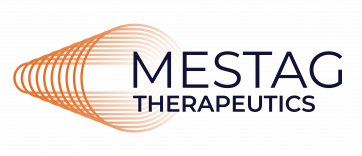
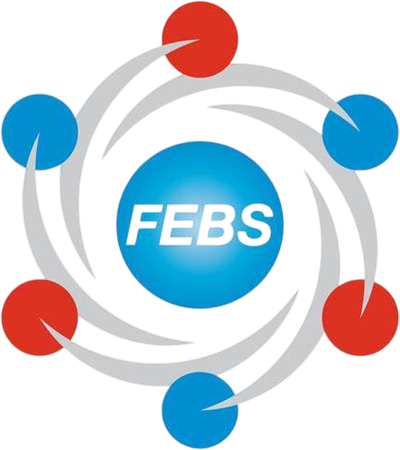



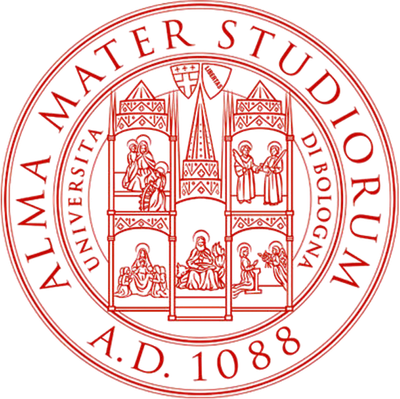

Selected publications
Recent visitors
Dr Martina Gabrielli (CNR Institute, Milan-Monza Brianza, Italy)
A Research Fellow in Neuroscience, Martina's visit was funded by the NTU International fund to experience iPSCs culture.
Dr Amalia Luce (Università degli Studi della Campania Luigi Vanvitelli, Napoli, Italy)
A visiting Research Fellow from 2021-2023, Amalia worked with milk extracellular vesicles (and much more)
Dr Chiara Tammaro (Universita' degli Studi della Campania L Vanvitelli)
Chiara was a visiting PhD student in 2023
Elisa Borghi (University of Bologna, Italy)
Erasmus Placement M-student (2022)
Dr Chiara Suanno (BIGEA, University of Bologna, Italy)
Chiara was a visiting PhD student in 2020 working with pollen extracellular vesicles
Press
NTU researchers secure university’s fellowships from the Biotechnology and Biological Sciences Research Council (BBSRC)
Nottingham Trent University has been selected as the host institution for two prestigious BBSRC Fellowships, awarded to Dr Martina Gabrielli and Dr Yuri Kawaguchi.
Read More£9 million investment fuels groundbreaking bioscience research
Unveiling novel mechanisms of synaptic dysfunction in the ageing brain employing human models Martina Gabrielli, Nottingham Trent University
Read MoreREF 2029 People, Culture and Environment pilot panels membership
Panel membership Unit of Assessment 3 – Allied Health Professions, Dentistry, Nursing and Pharmacy Co-chairs Carmel Hughes Professor of Primary Care Pharmacy Queen’s University of Belfast Kevin Shakesheff Pro Vice-Chancellor Research & Innovation The Open University Panel members Afzal Mohammed Professor of Pharmaceutics Aston University ............................... Elisabetta Verderio Edwards Professor of Biochemistry Nottingham Trent University ...............................
Read More